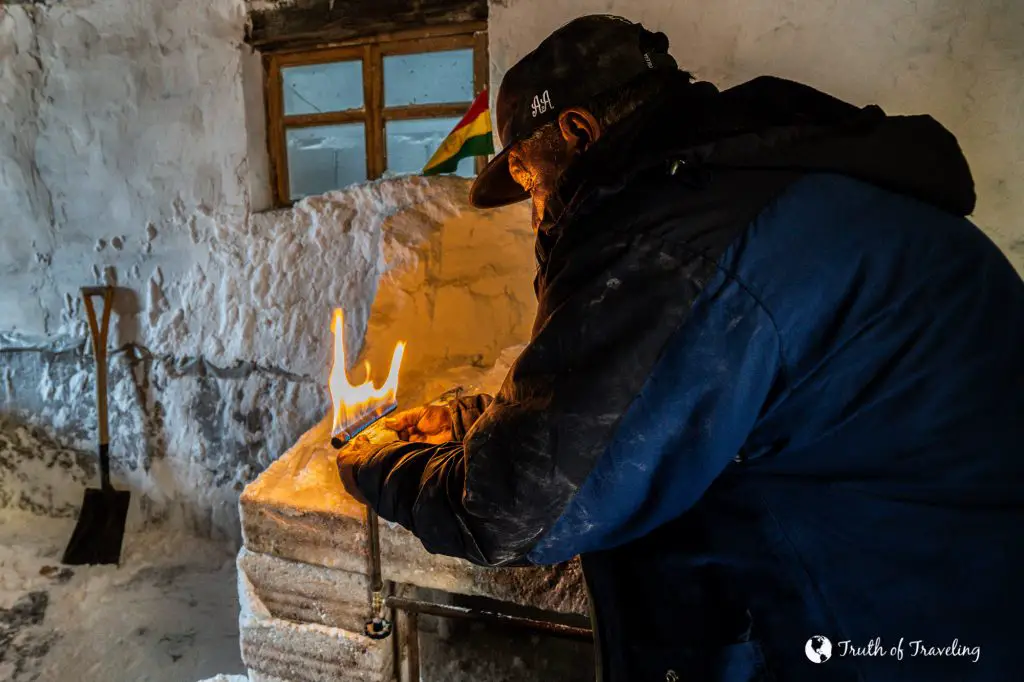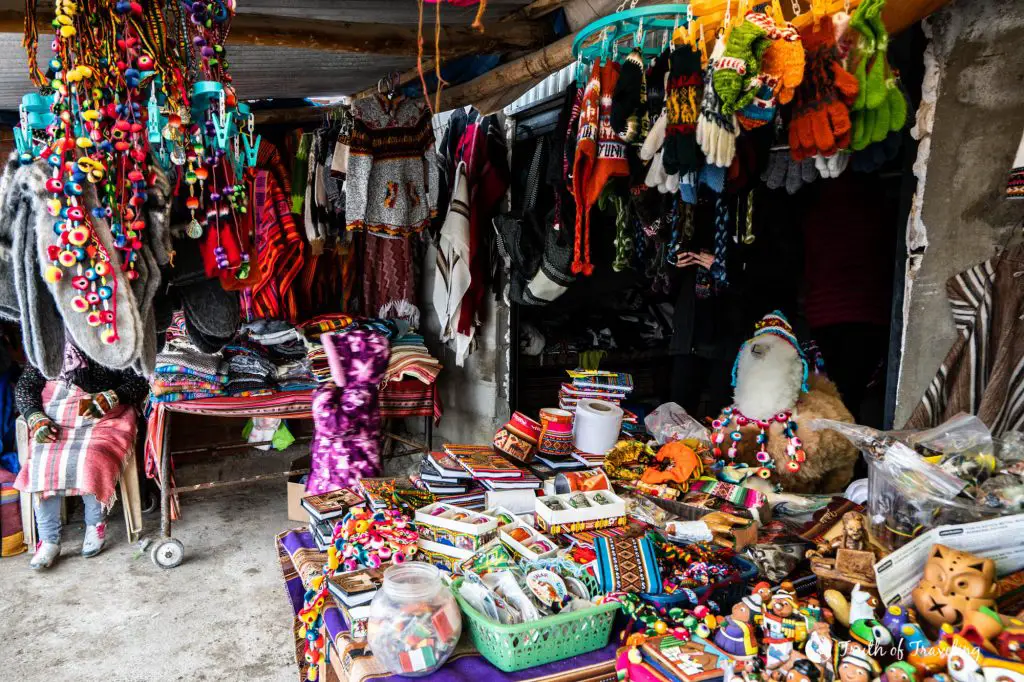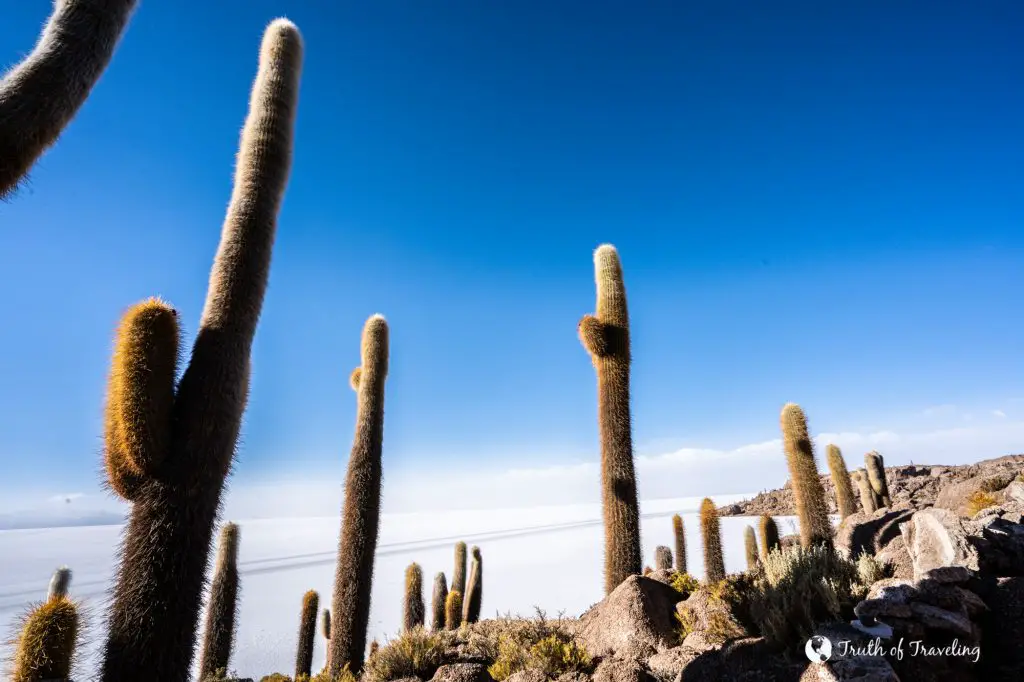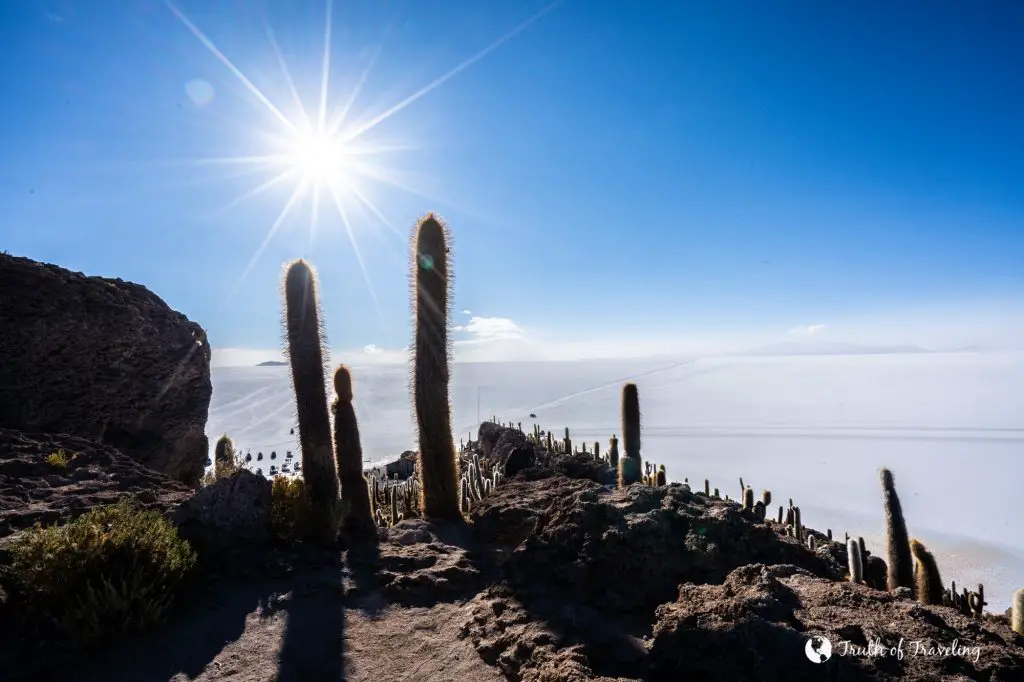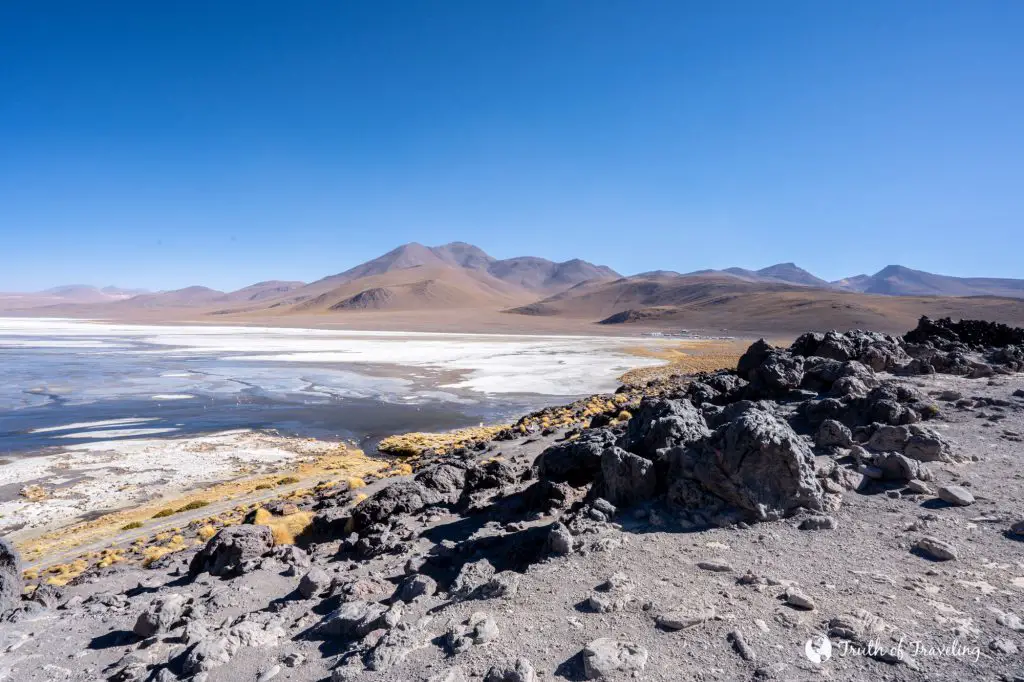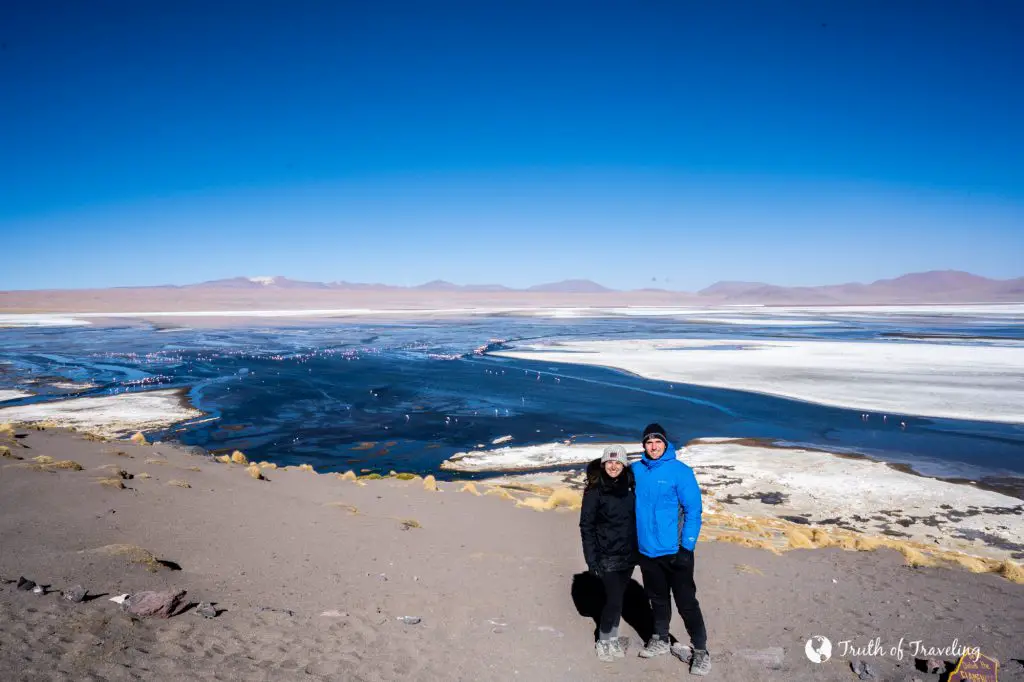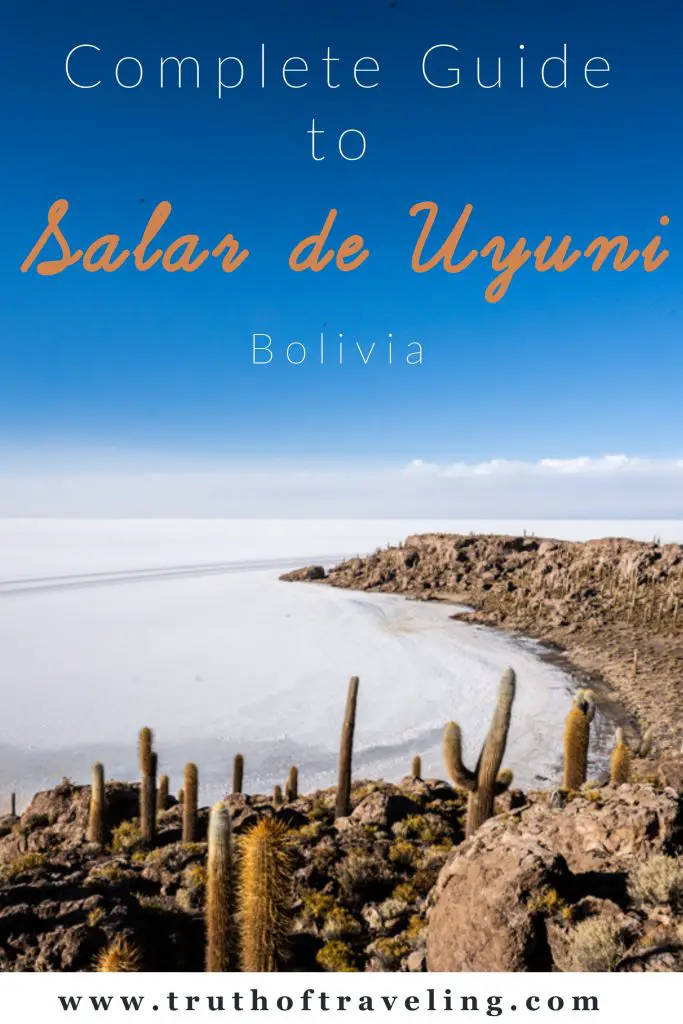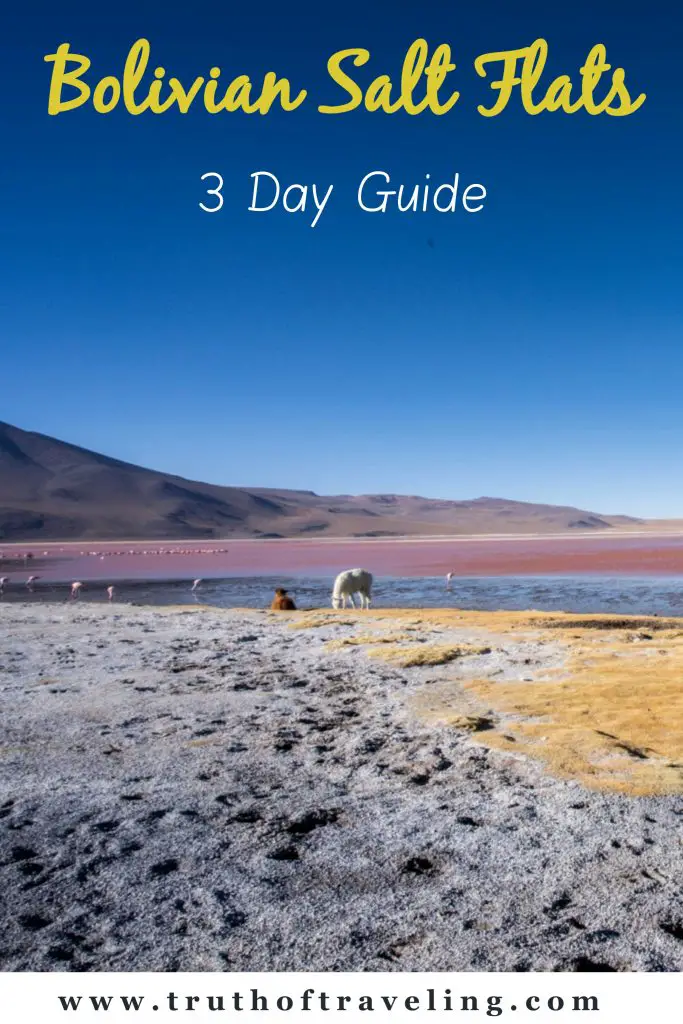The Salar de Uyuni, or Uyuni Salt Flat, is one of the main reasons we were so excited to go to Bolivia. The Salar de Uyuni is the largest salt flat in the world about 550 kilometers south of La Paz. It is an incredible phenomenon and we are so excited to have visited it! Here is our experience from our 3 day Bolivian salt flat tour including how we got there and what we did each day!
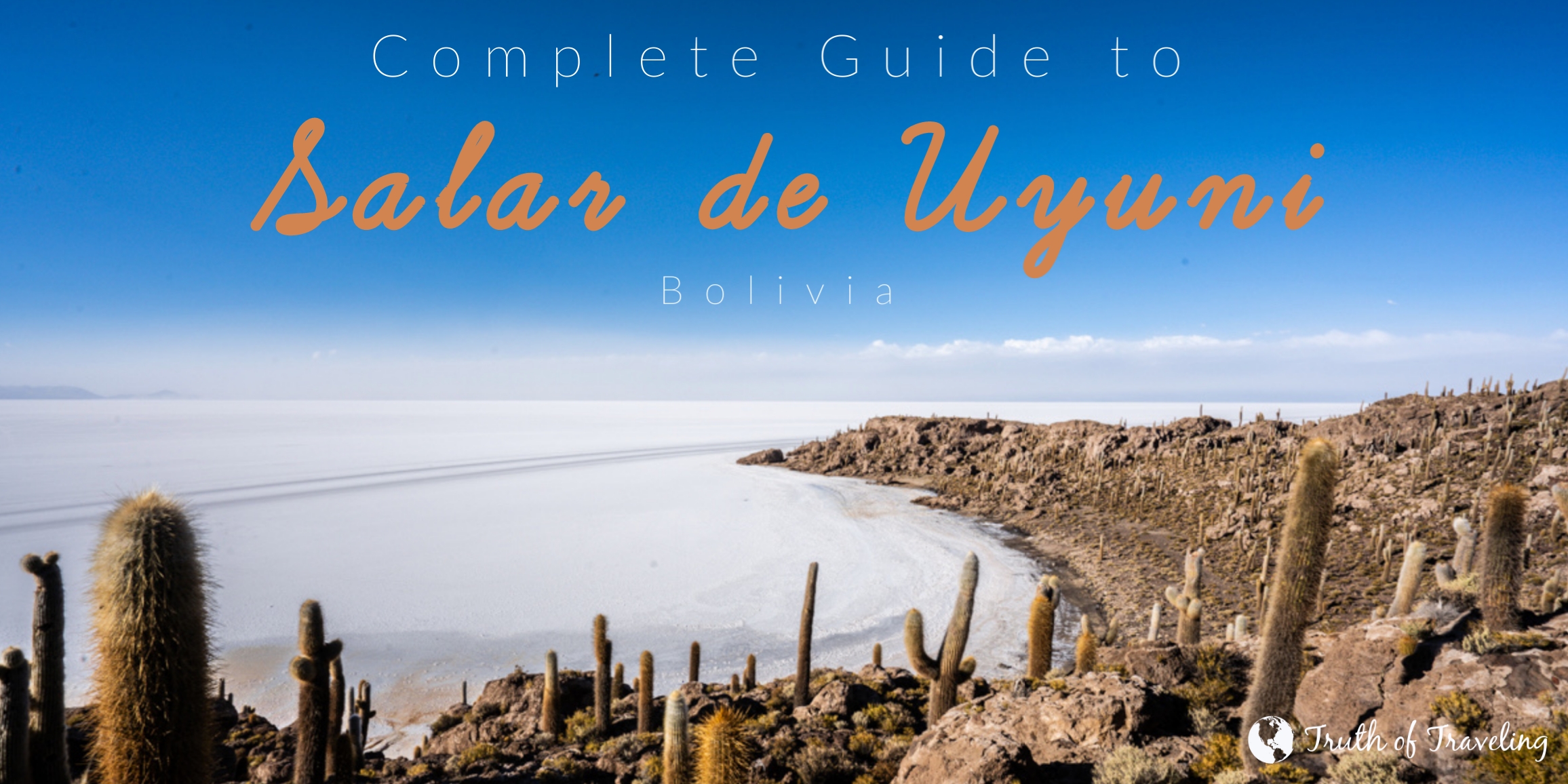
Booking the Tour
We booked our 3 day salt flat tour about 2 days beforehand. Tours start in the small town of Uyuni, Bolivia. There are plenty of tour operators both in La Paz as well as in Uyuni. Most buses coming from La Paz arrive in Uyuni around 7:00-8:00 AM. Tours usually begin at 10:00 AM so while we could have booked it in Uyuni with the two hours we had, we decided we didn’t want to risk it.
After reading reviews, we decided to go with Salty Desert Aventours. They had good reviews and were still reasonably priced. We messaged them on their website asking if they still had availability for the dates we wanted and they responded the next day. It was all super easy to arrange and they even picked us up from our overnight bus and drove us to their office. Then we simply paid our balance in cash and were set to go!
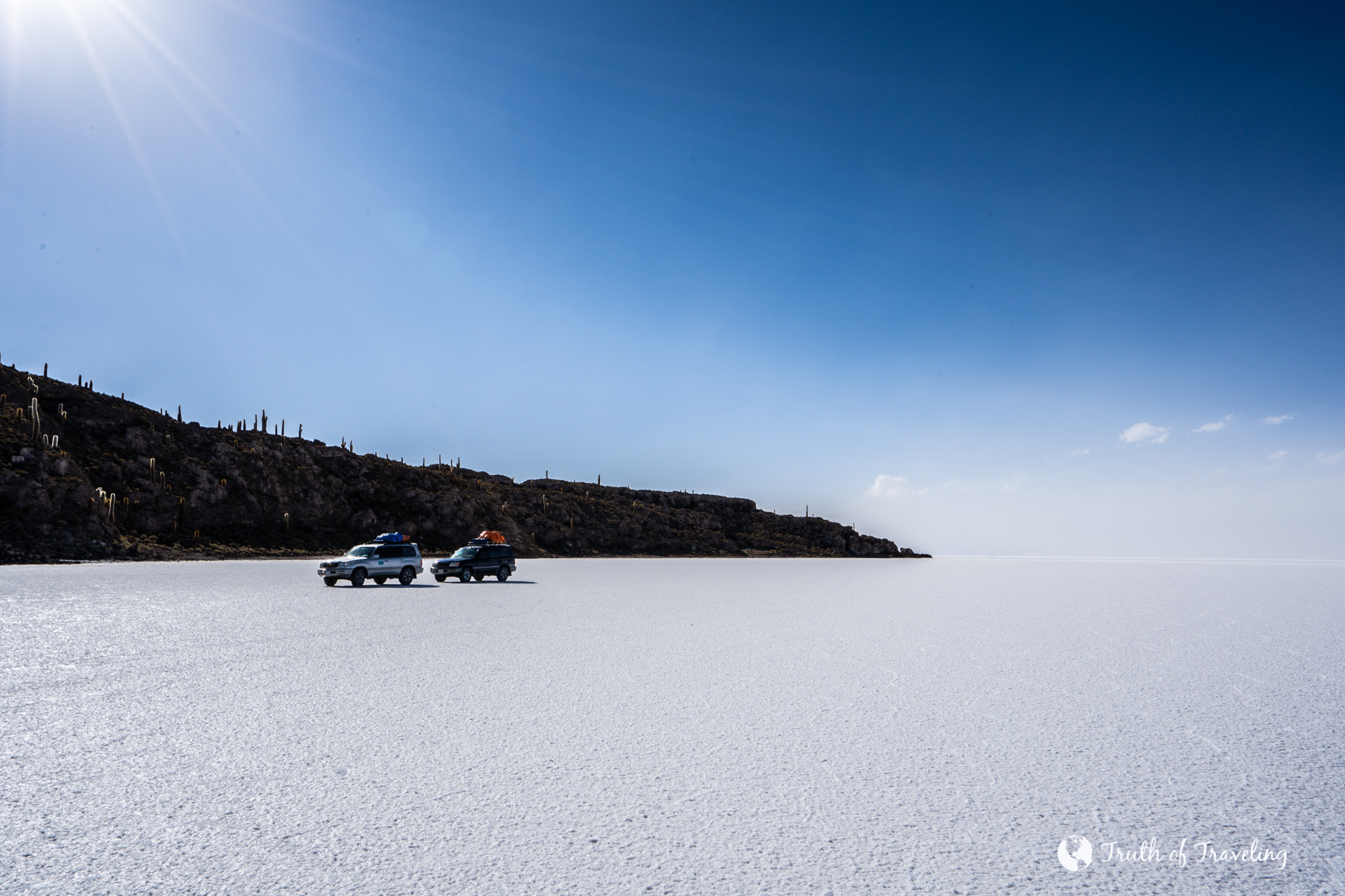
Travel Truth: Getting an English speaking tour guide will cost you a bit more money. If your Spanish is good enough or you think you can make do, getting a Spanish guide is a way to save money. We opted for an English guide and he was amazing, however, we both think we could have managed in order to make it a little less expensive!
We are really happy with our choice of tour company. Our tour guide Dino was so sweet and very accommodating every time someone had a request or a question. There were 2 cars, the one we were with (5 people) and a second car with 6 people. So in total our group was 11 people which we felt was totally fine. It was 1,200 Bolivianos per person plus an additional 180 Bolivianos for entrance fees into the island on day 1 and the national park on day 2. So in total it was 1,380 Bolivianos per person or about 200 USD. We had to pay to use the bathroom a few times throughout the 3 days but it was never more than 5 Bolivianos and most often it was 1.
- The one thing we were surprised by was the bag situation. We got to the office in Uyuni and they told us we could only bring one big bag between the two of us. The big bags are put on the top of the cars and taken off only at night so for weight reasons they are limited.
- We just weren’t expecting this so we quickly had to put everything we would need for the 3 days in one backpack and everything we didn’t need in another one . My backpack stayed in the office in Uyuni with other peoples luggage. It’s not a big deal but we just weren’t expecting to have to do this and would have prepared beforehand if we had known.
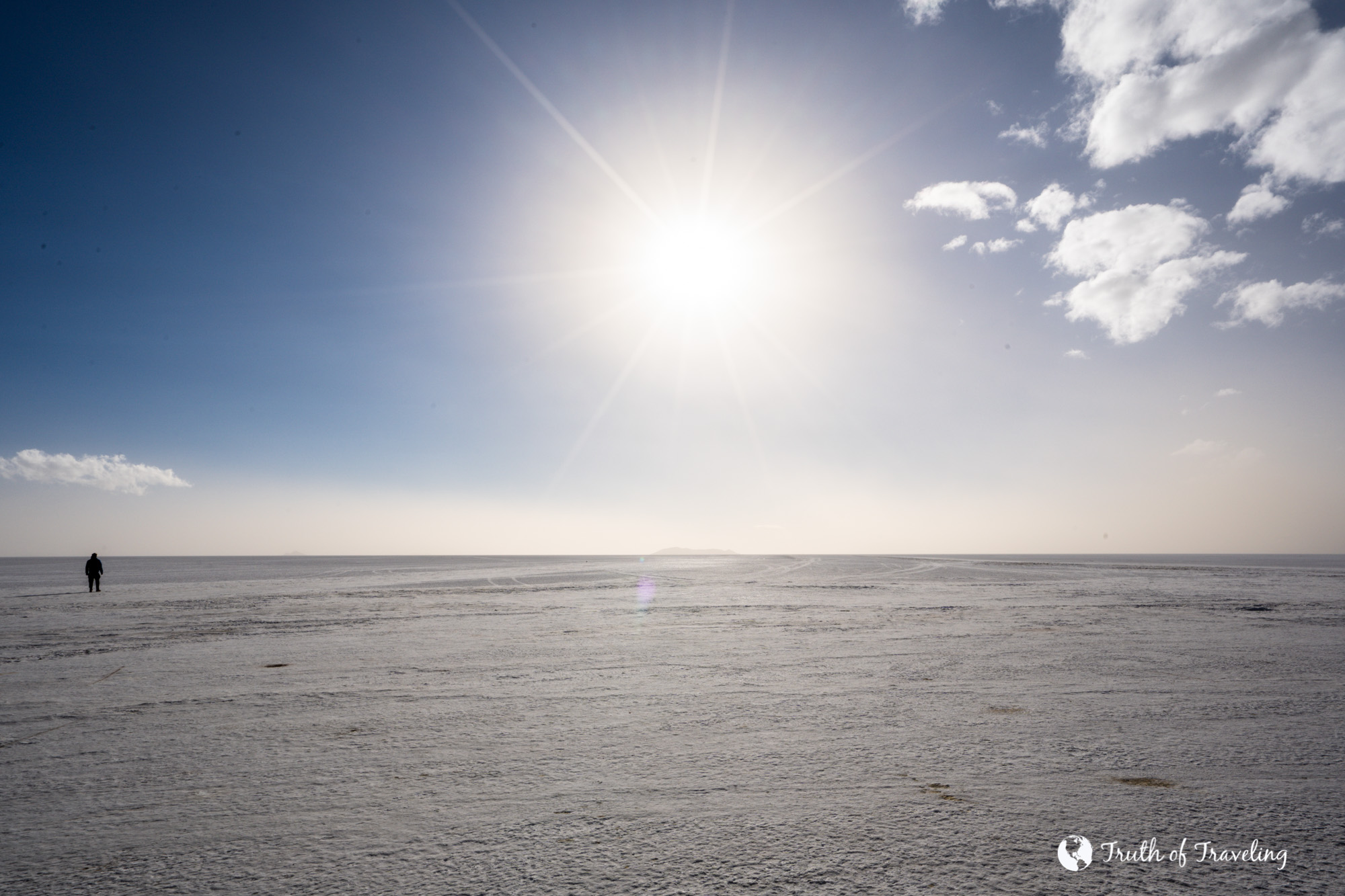
Things to look for when researching and deciding on a Bolivian Salt Flat Company:
- The Cars- how safe the cars are, if they have seatbelts, if they have a history of breaking down, etc.
- Information/reviews about the drivers and how many people are in a car
- Type of Accommodations- usually you won’t get names of places because it’s so remote but the types of places you will be staying in will help you be prepared
Getting to Uyuni
La Paz to Uyuni is a very common itinerary for travelers. You can fly but its much more expensive so we took an overnight bus. There are many different companies that do this route but we chose Todo Turismo because they had by far the best reviews online. It cost 250 Bolivianos each way for one person so in total 1,000 Bolivianos for both of us which is about 144 USD. This was definitely more than we wanted to spend but we needed to get there, it was much cheaper than flying and also served as our accommodation for the night.
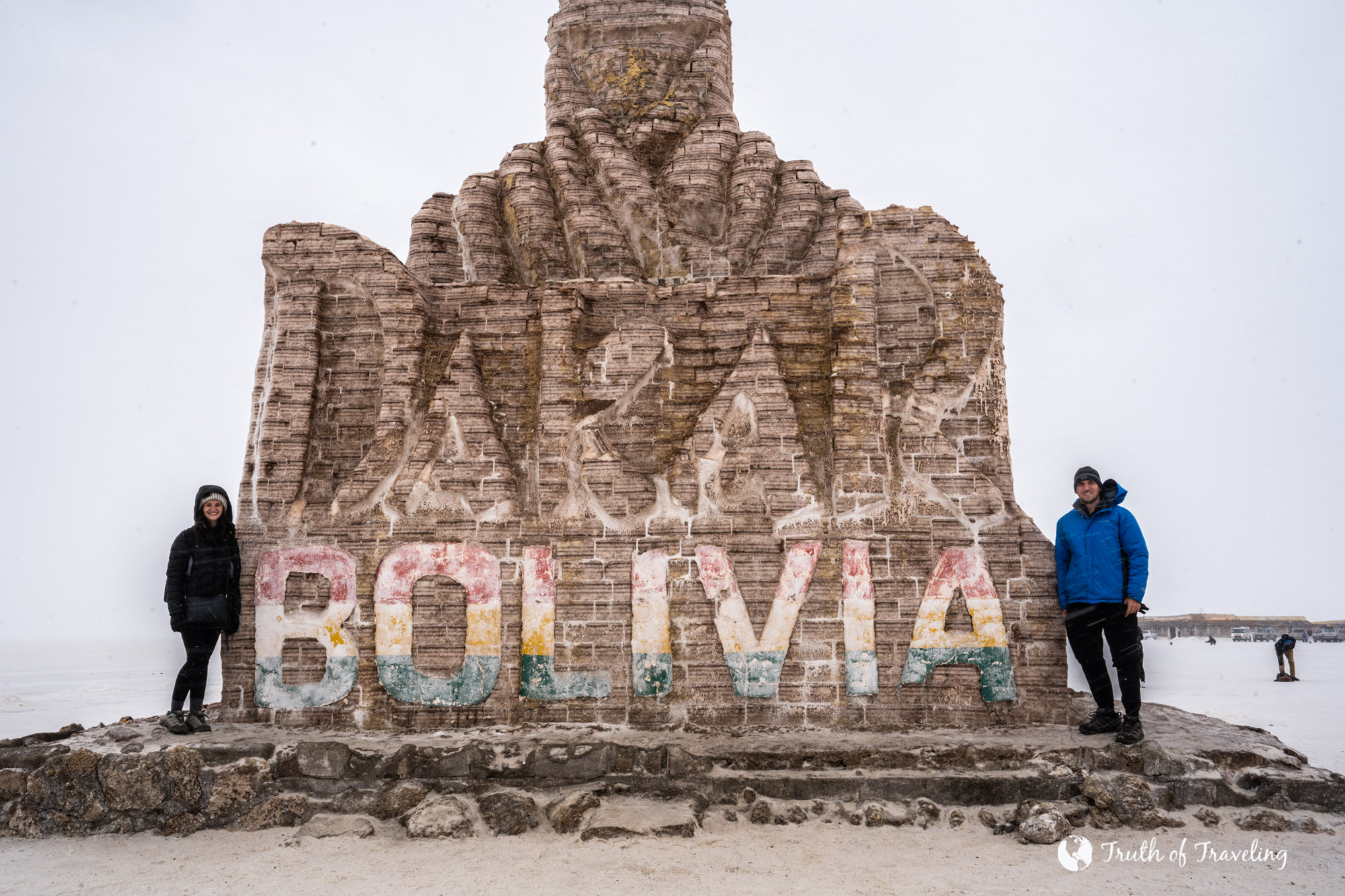
They gave us both dinner and breakfast as well as a water bottle on the bus so we felt they did a good job of trying to make it worth the money. We were on the second floor in semi cama seats that reclined about 3/4 of the way. For 50 Bolivianos more (300 total instead of 250) you can book a VIP seat which are nicer seats and recline farther back. Honestly, we were pleasantly surprised by how clean and comfortable the upstairs seats were!
- While we were waiting for our tour to start in Uyuni we walked across the street and went to Nonna’s where we got breakfast for 30 Bolivianos or 4 USD.
Read More: Is La Paz, Bolivia Worth Visiting?
Day 1 of our Salt Flat Tour:
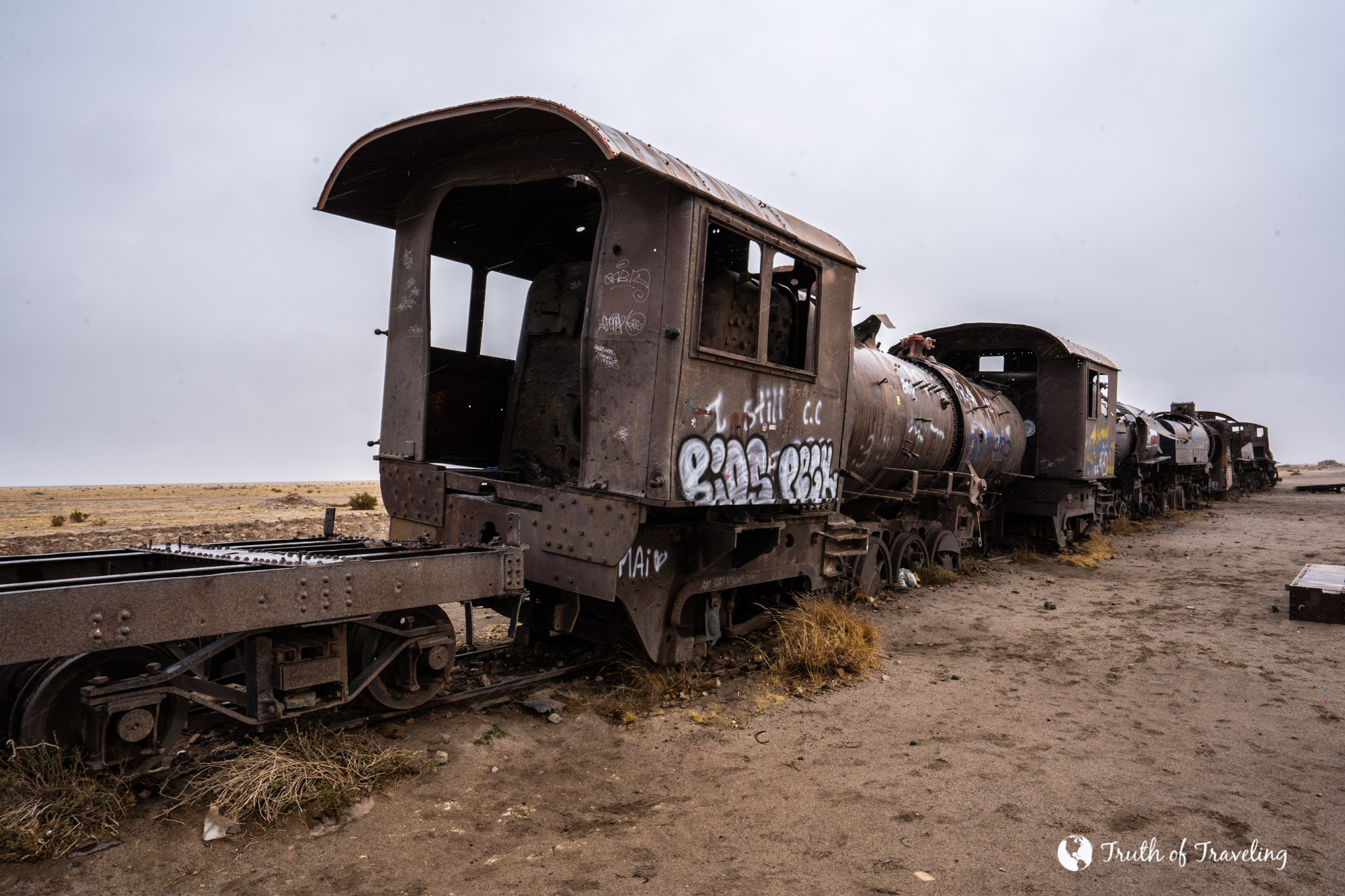
Our tour on day 1 started around 10:00 AM. We loaded our backpack with extra stuff on the roof of our Toyota Land Cruiser and piled in. There were 5 of us as well as the driver and our guide. While 7 people sounds like a lot it really wasn’t bad at all. We all had our own seats and seatbelts that worked. Two people sat in the 3rd back row then there were 3 of us in the middle row with the driver and guide in the front seats.
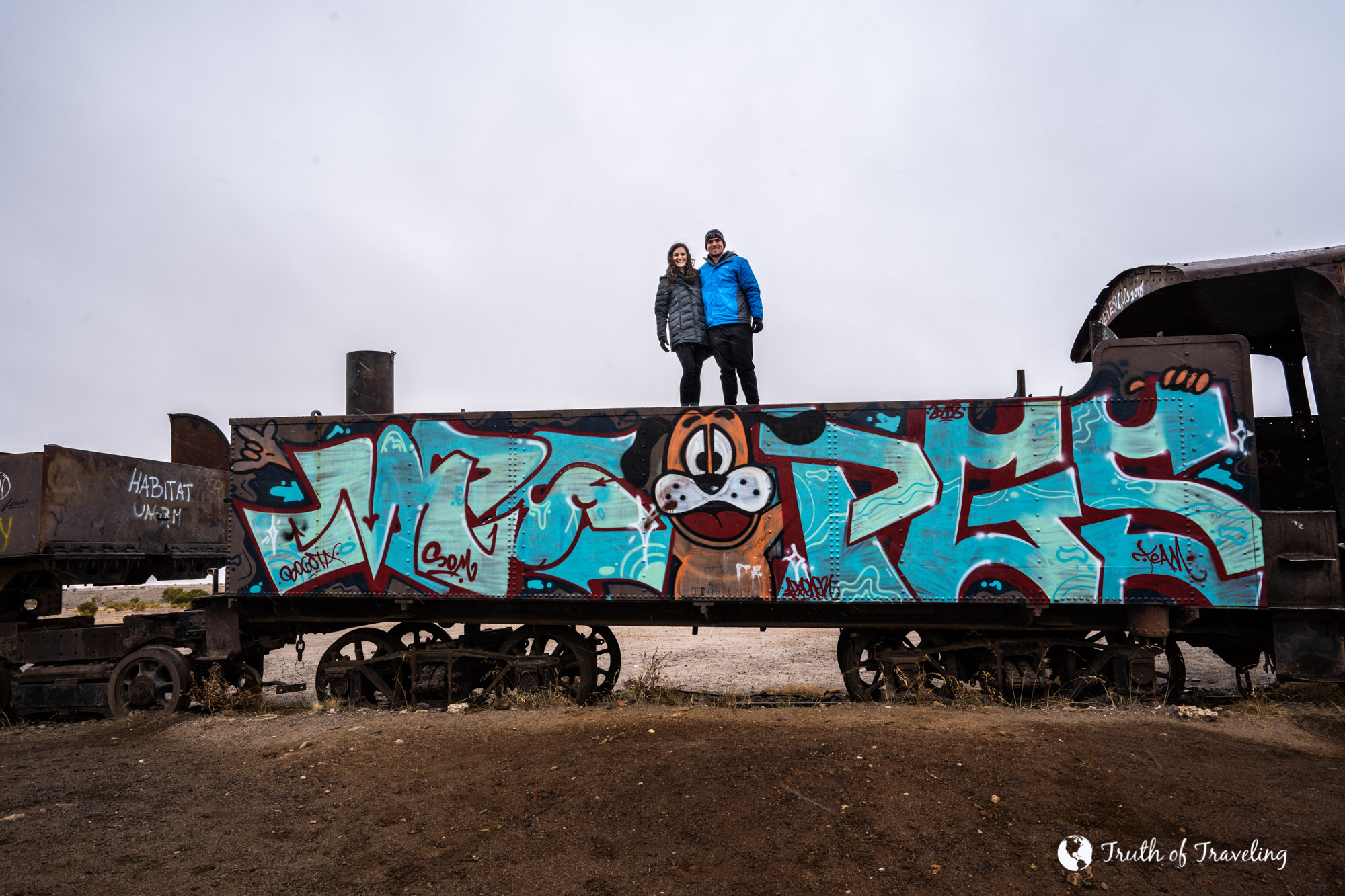
First we went to the Cementario de Trenes or the Train Cemetary just outside Uyuni. We drove for about 10 minutes before getting to this first spot. Our guide told us a little about how the trains were built to connect Uyuni with other areas. However, it was later abandoned when there was no more money to continue construction. Now it sits as the first stop of many salt flat tours and a really cool photo location!
Our second stop was Colchani Village, a small village outside the salt flat. There is an opportunity to see a salt factory, where you can buy bags of kitchen salt for 1 Boliviano that come straight from the salt flat itself! There were stalls and stalls of vendors selling souvenirs. Honestly there were a lot of other cars at this spot and felt a bit like a spot to bring all the tourists to buy things. However, we know a lot of the nearby economy relies on tourism from the salt flat.
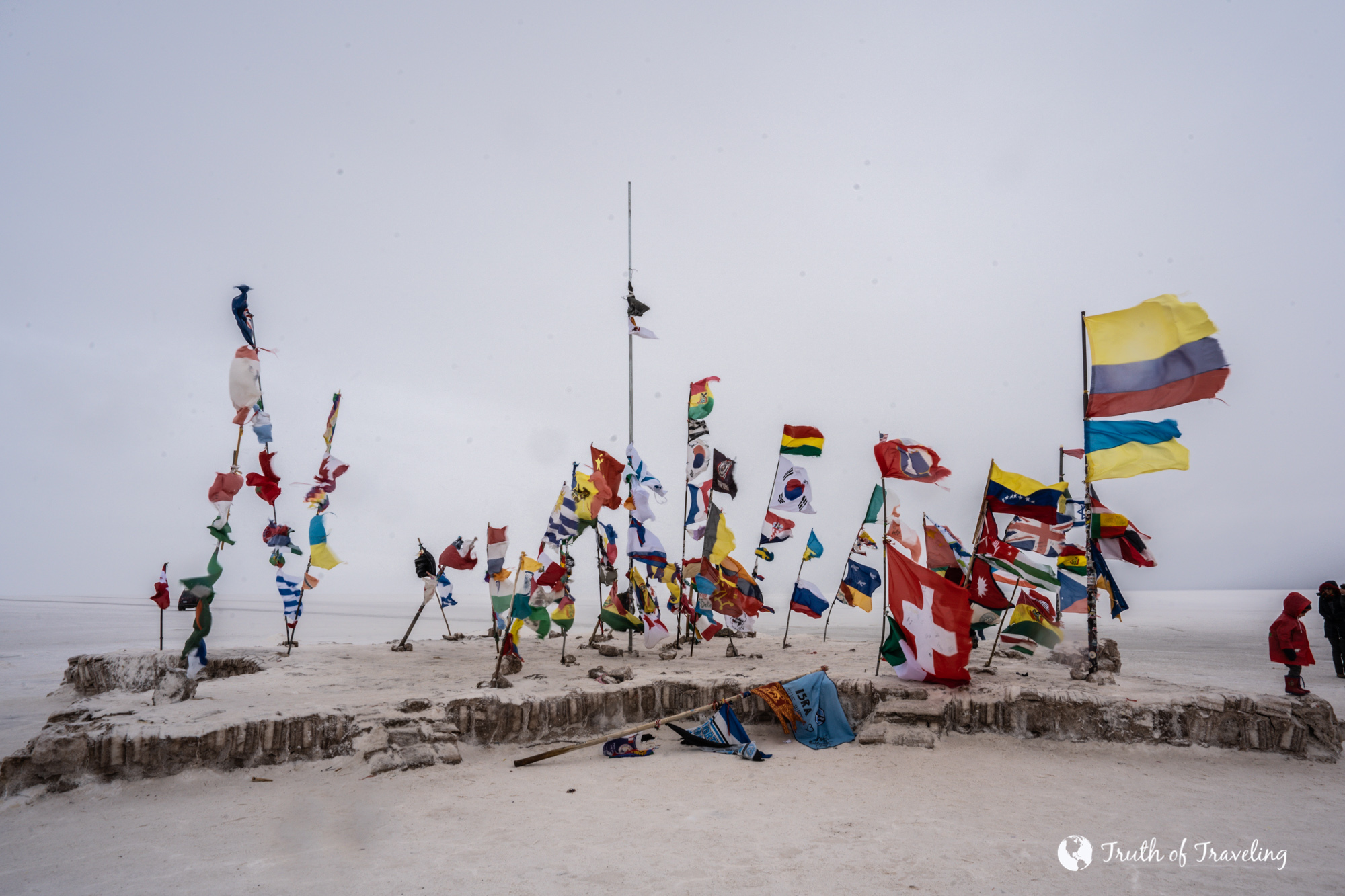
We spent about the next hour driving into the salt flat amazed at where we were. The farther in you go the expansiveness of the salt flat becomes more and more apparent. Soon all you can see is white salt and blue sky. Every now and then you catch a glimpse of another car driving through but the cool thing about the Salar de Uyuni is you really feel like you’re the only one on it. We drove through to our lunch spot at Playa Blanca Salt Museum which is really just a building on the salt flat where tours stop to have lunch before continuing on.
- We got an opportunity to take pictures in front of the Bolivia sign before having lunch at 1:15 PM. Lunch consisted of quinoa, fried vegetables, chicken, salad and potatoes.
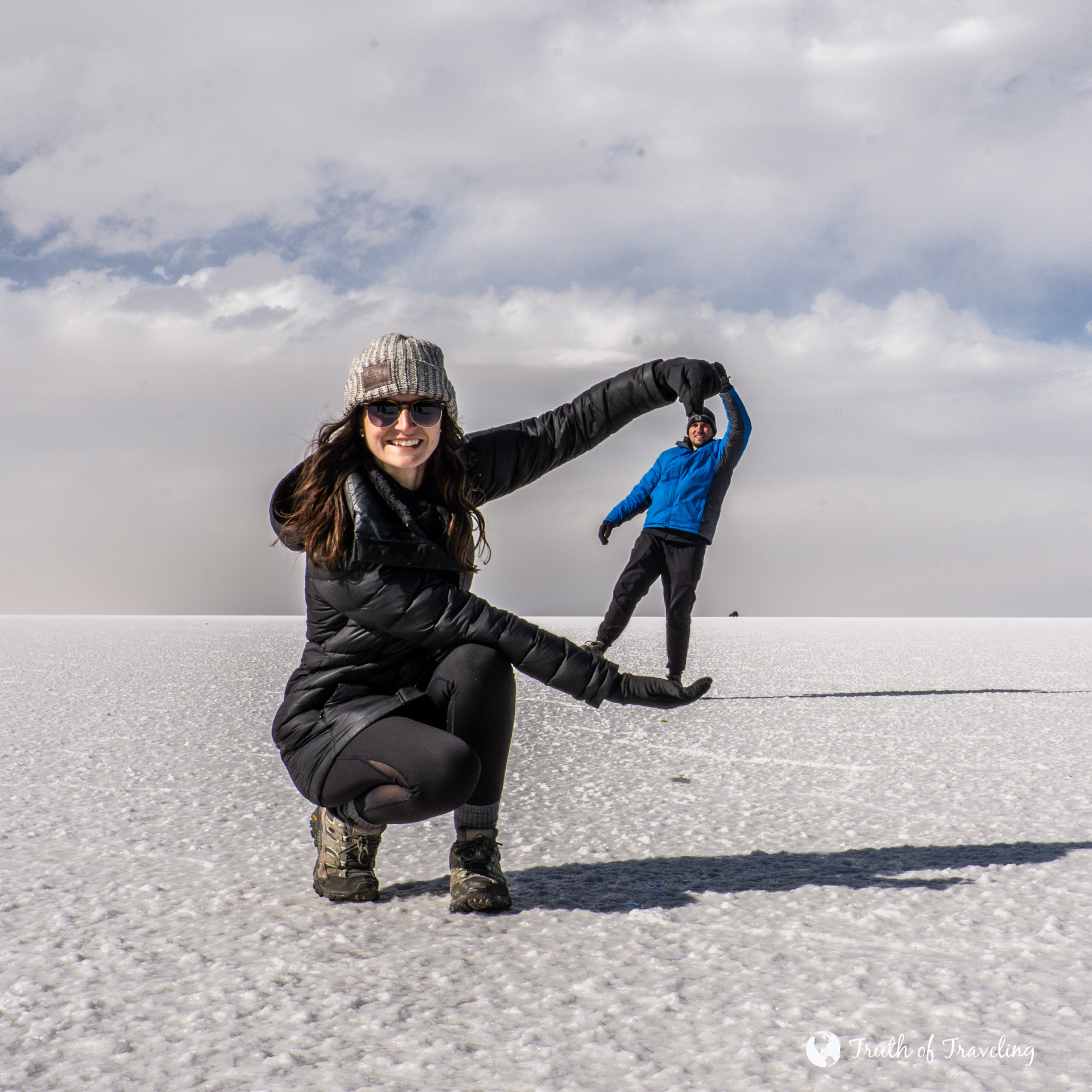
Around 2:00 PM we got back into the car to drive even farther into the salt flat. It was very overcast so we kept driving to Isla Incahuasi or Cactus Island. There we found blue sky and spent a while taking funny perspective pictures. Our guide was so helpful laying on the ground in order to get good pictures for everyone! We even put together a funny video demonstrating the optical illusion.
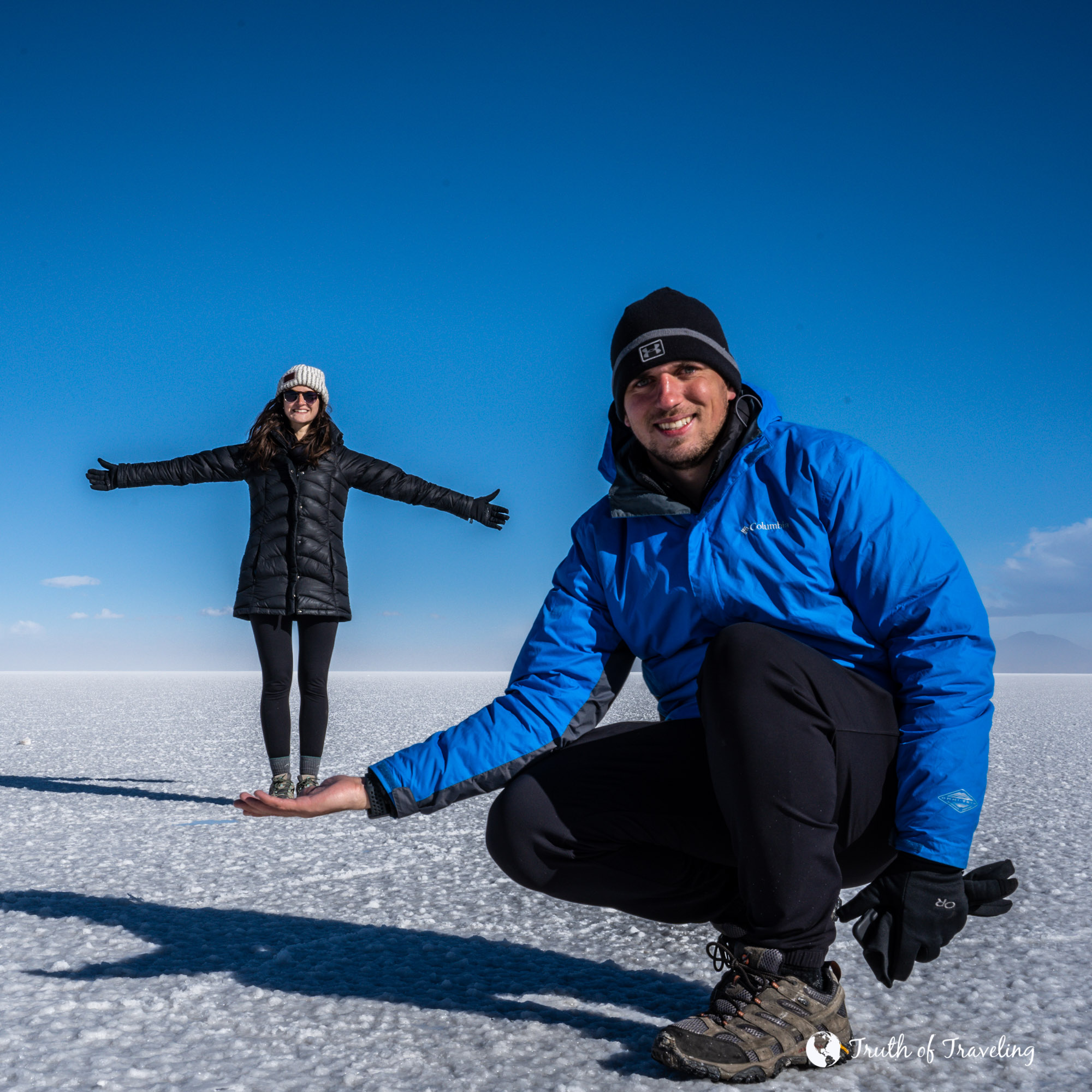
Travel Truth: Our advice would be to have your ideas ready for how you want to take pictures and then be really patient! It’s all about the angle and how you’re standing so it takes some trial and error.
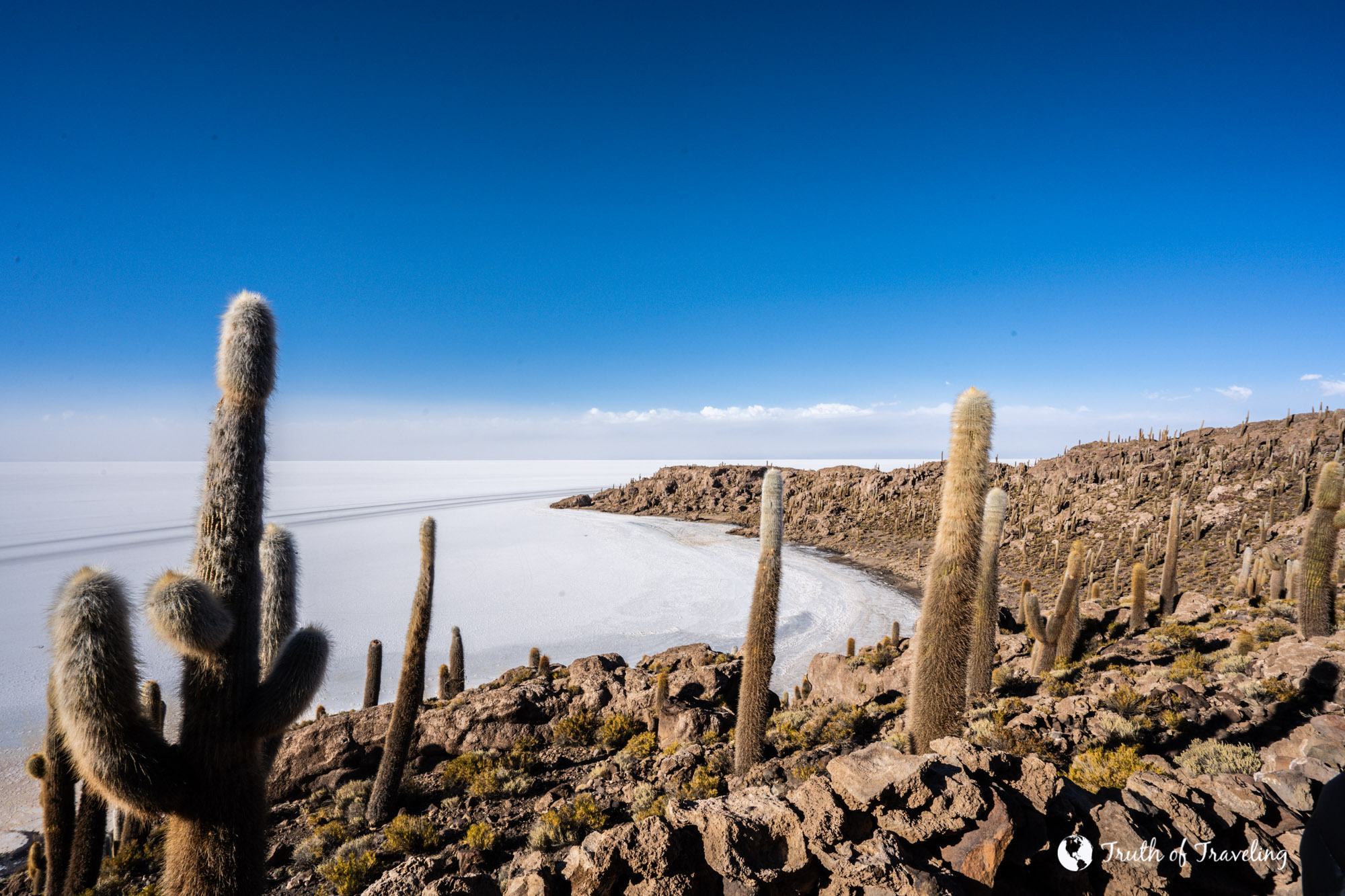
We drove a few minutes to the entrance of Isla Incahuasi and paid the entrance fee of 30 Bolivianos or about 4 USD. It is a small island filled with cacti with some of them over 600 years old. The contrast of the white salt with the brown and green from the island makes it so beautiful! It took us about 20 minutes to hike to the top and we would have spent more time but it was so incredibly windy at the top we almost couldn’t stand!
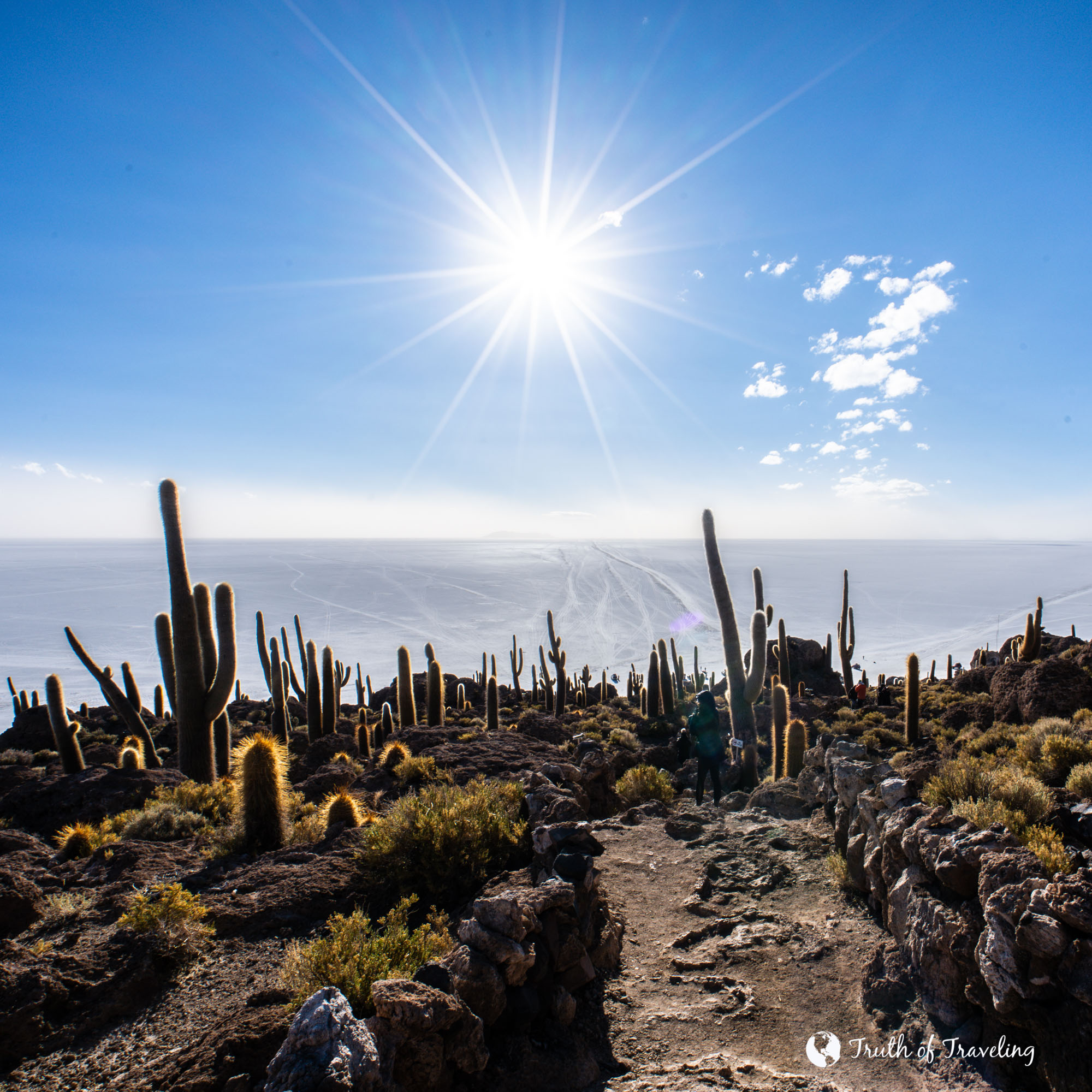
Around 5:00 PM we got back in the car, stopped to watch the sunset over the salt flat for a few minutes before jumping back in to drive to our accommodations for the night. We stayed in San Juan Village at a salt hotel where the bed, tables, walls and floor were all made from salt. After driving for probably 2 hours we were happy to arrive!
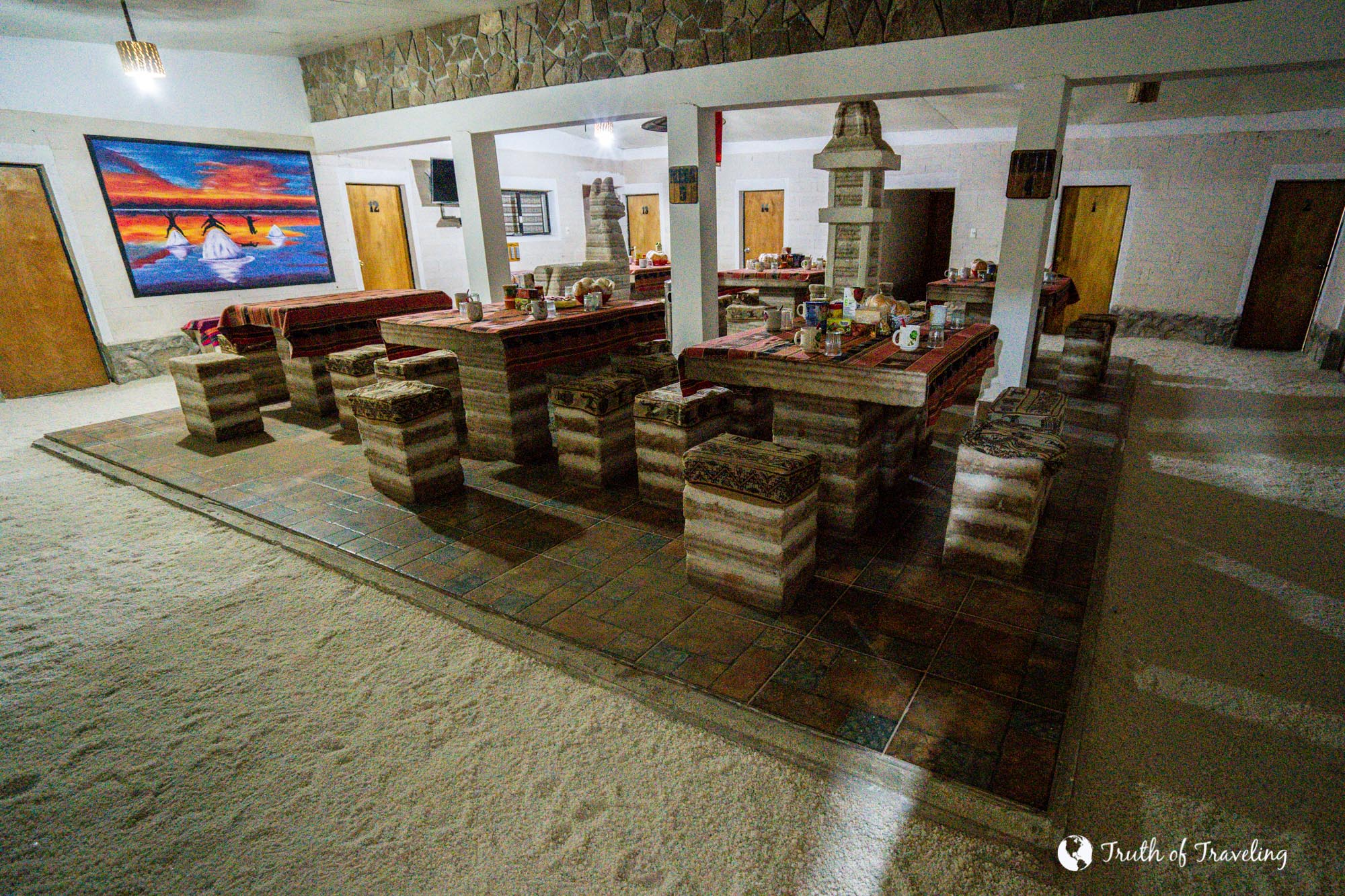
It was really cool to stay in a place made entirely of what we had seen earlier that day. There was a large common room with tables and chairs and then rooms surrounding it. The one thing we wish this place had was heat! We had a private room with two twin beds and after such a cold day, we grabbed all the blankets from both beds and squished into one twin bed. Even with 6 blankets we both slept in multiple pairs of pants, our winter jackets and hats.
- There was one light in the room but no outlets so there was a large charging station in the common room to charge your phone or anything else you needed.
- Dinner that night consisted of soup (its very traditional in South America to start dinner with soup), rice, French fries, and vegetables. We quickly realized that the food was brought in the cars and prepared by the drivers.
- Our guide told us for a few Bolivianos you could have a hot shower but after being so cold all day the last thing we all wanted to do (even if it was promised to be hot) was take off all our layers.
Day 2 of our Salt Flat Tour:
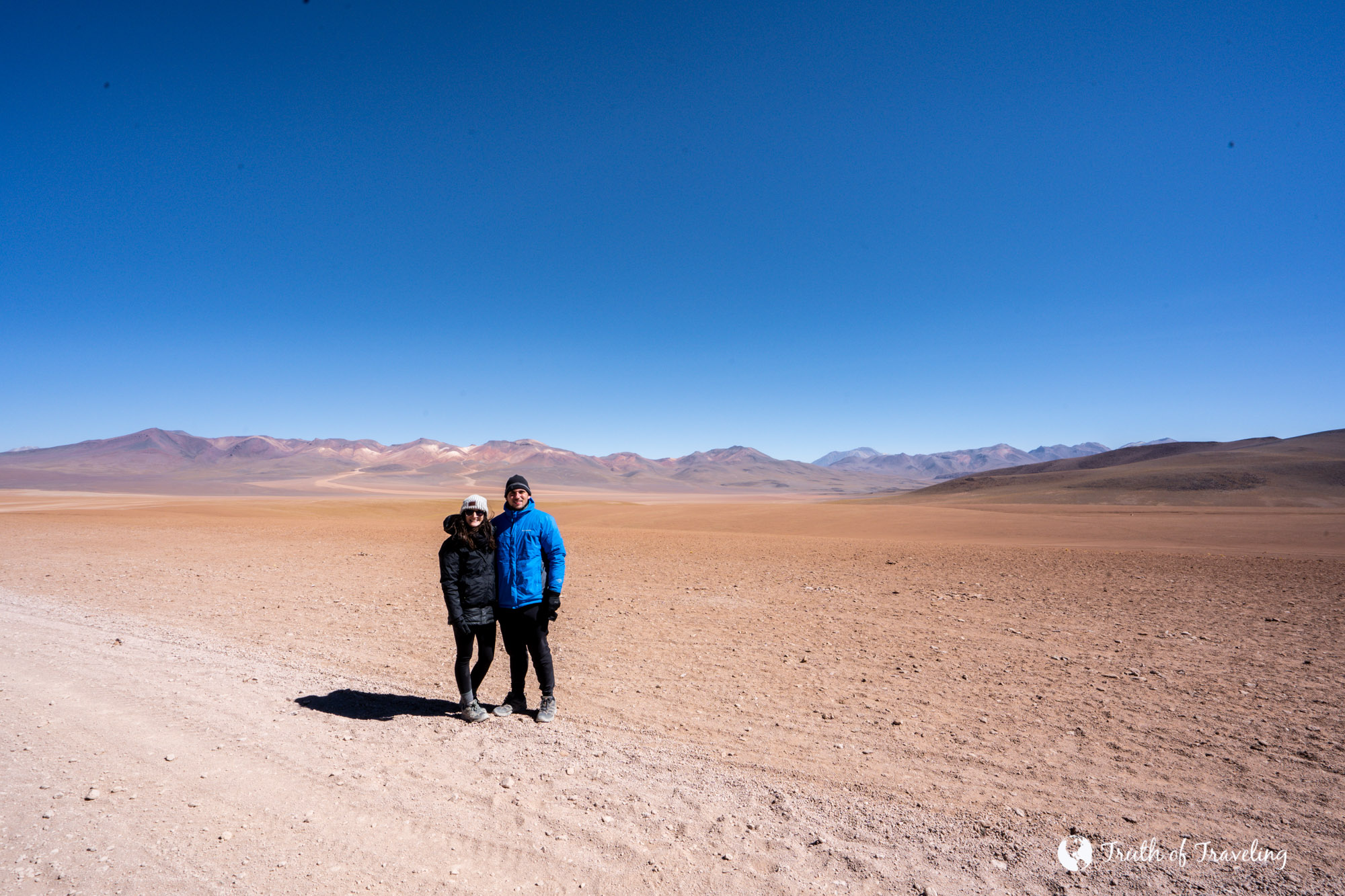
Our alarms went off on day 2 at 5:45 AM which we have started getting used to as we keep traveling. We quickly packed up our stuff and were eating breakfast by 6:30 AM. Breakfast consisted of bread, fruit, coffee and tea. After a quick breakfast, our bags were on top of the car and we were off!
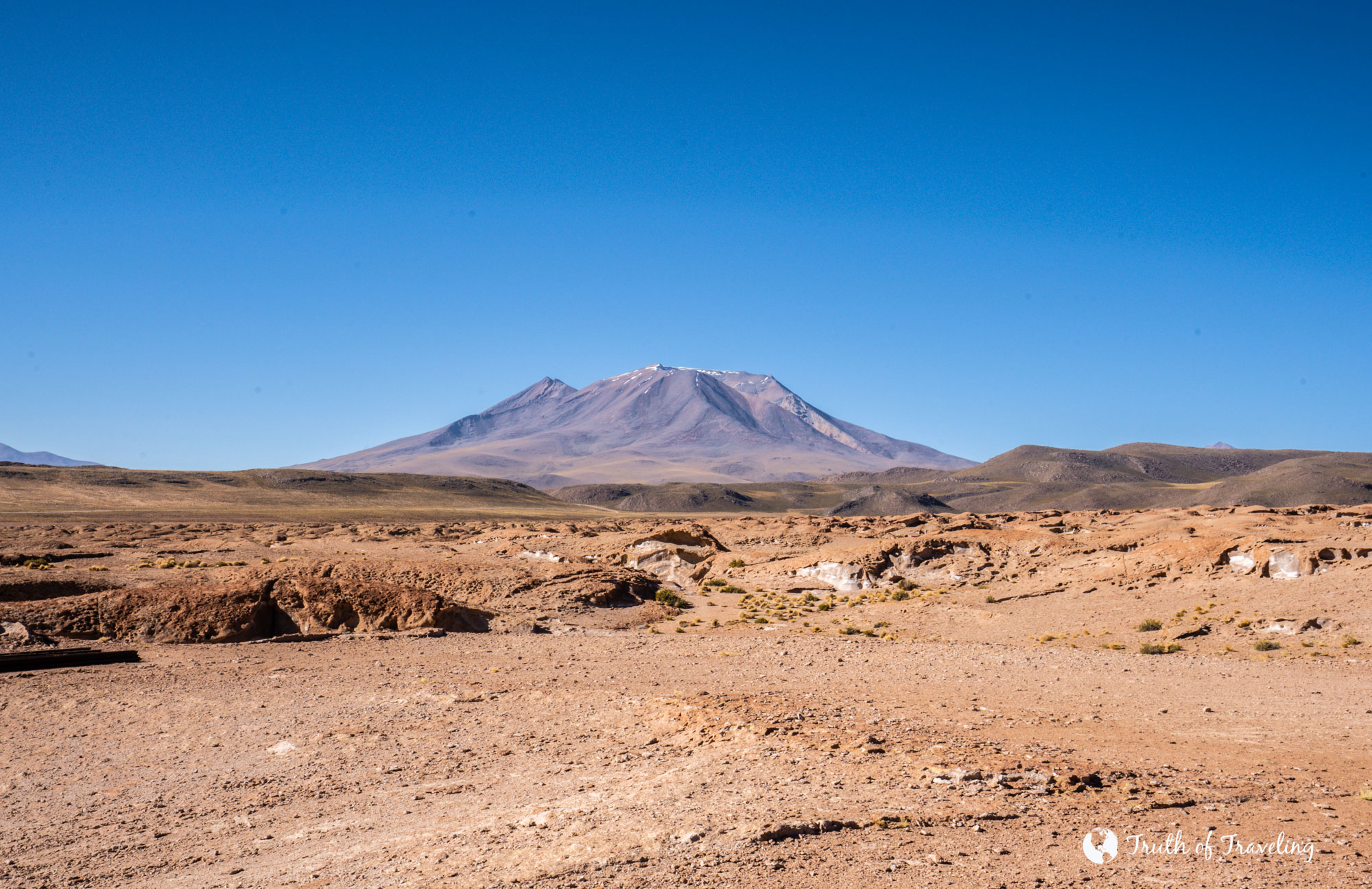
We drove for a while and got to our first volcano of the day around 9:30 AM. Our guide explained a little about where we were and the difference between the mountains and volcanoes that surrounded us.
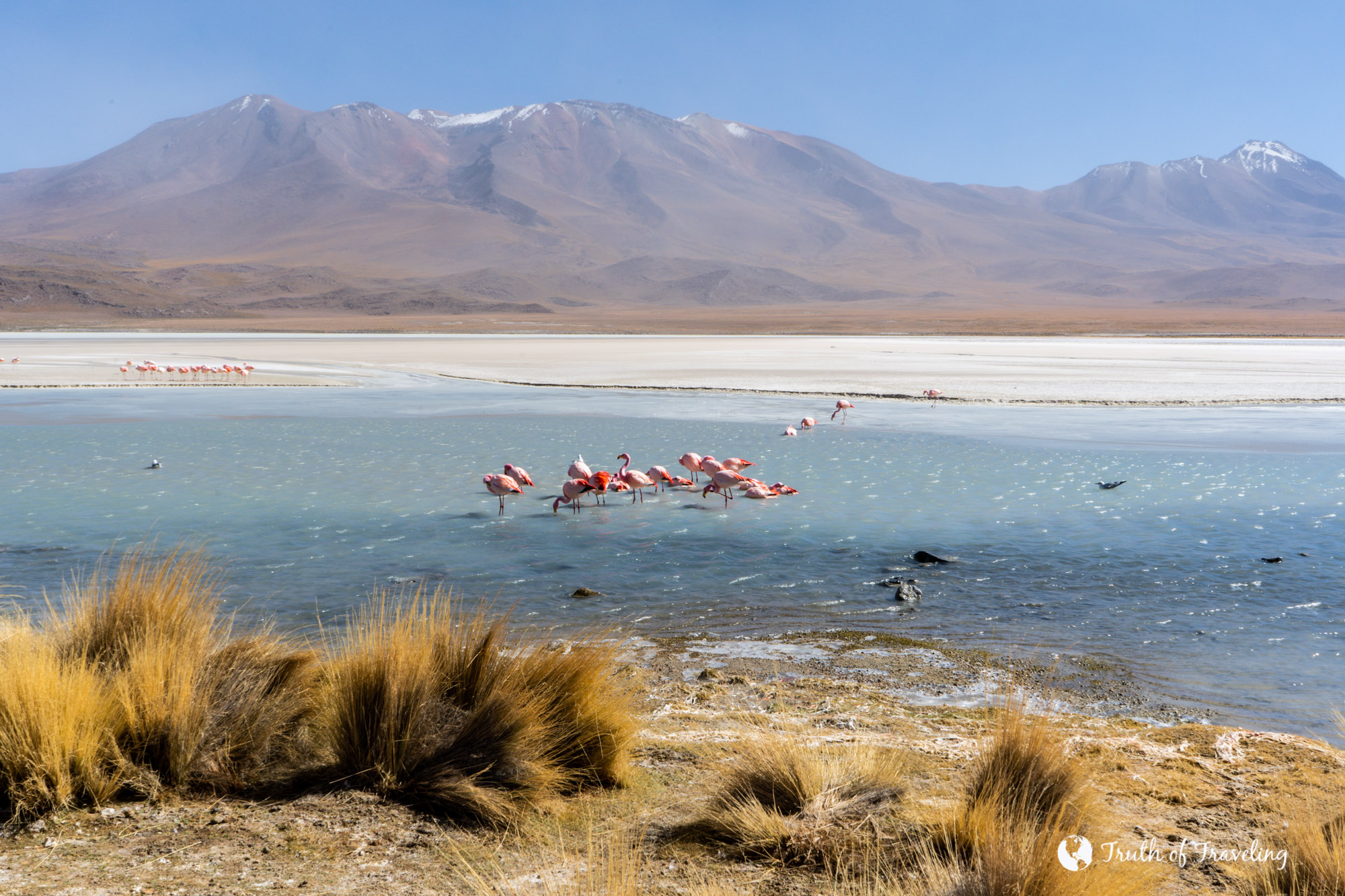
We got back into the car after snapping a few minutes to drive to our first lagoon. We immediately were all in awe! The snow capped mountains and blue waters were a sight on their own. But we got our first spotting of pink flamingos! It truly felt like we were in the middle of nowhere.
- We had lunch around 11:15 AM in a building close to the lagoon. Lunch included soup, rice, chicken, croquettes and pasta salad.
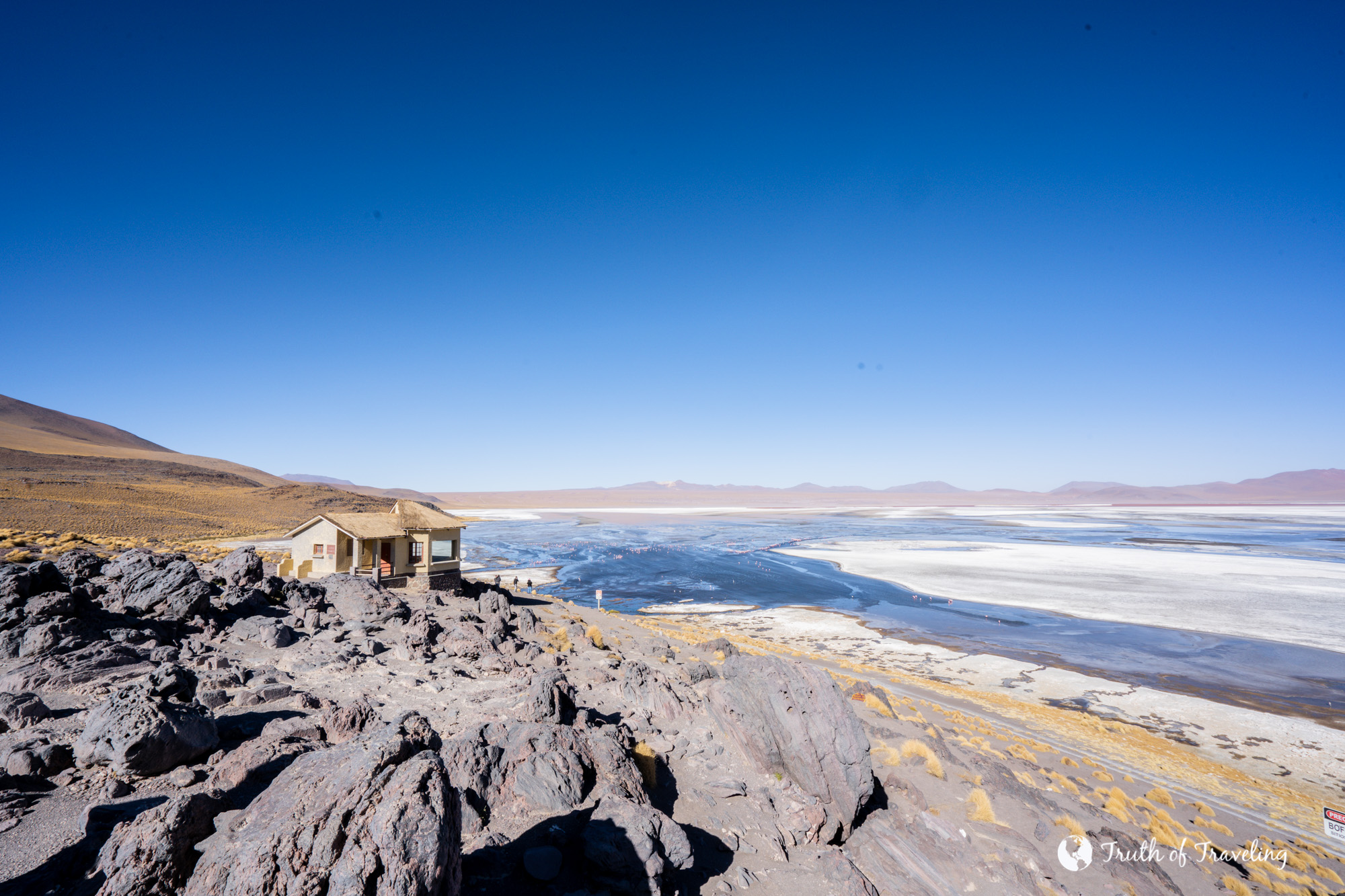
Once back in the car we stopped at Laguna Kara a few minutes up the road. Seriously we could stop at these all day and the view would never get old! Around 1:15 PM our guide stopped to point out what he called the rainbow mountains of Bolivia. Near Cusco, Peru the Rainbow Mountains are a popular day trip to see the red, orange and yellow of these special mountains. Lucky for us we got to see these without the hike!
About twenty minutes later we stopped to see the wild rock rabbits that scurry in and out of the massive rocks before getting to what our guide referred to as the rock statue around 2:15 PM. It felt like we were in the middle of the desert with no one else around. It was so quiet with mountains every where you look.
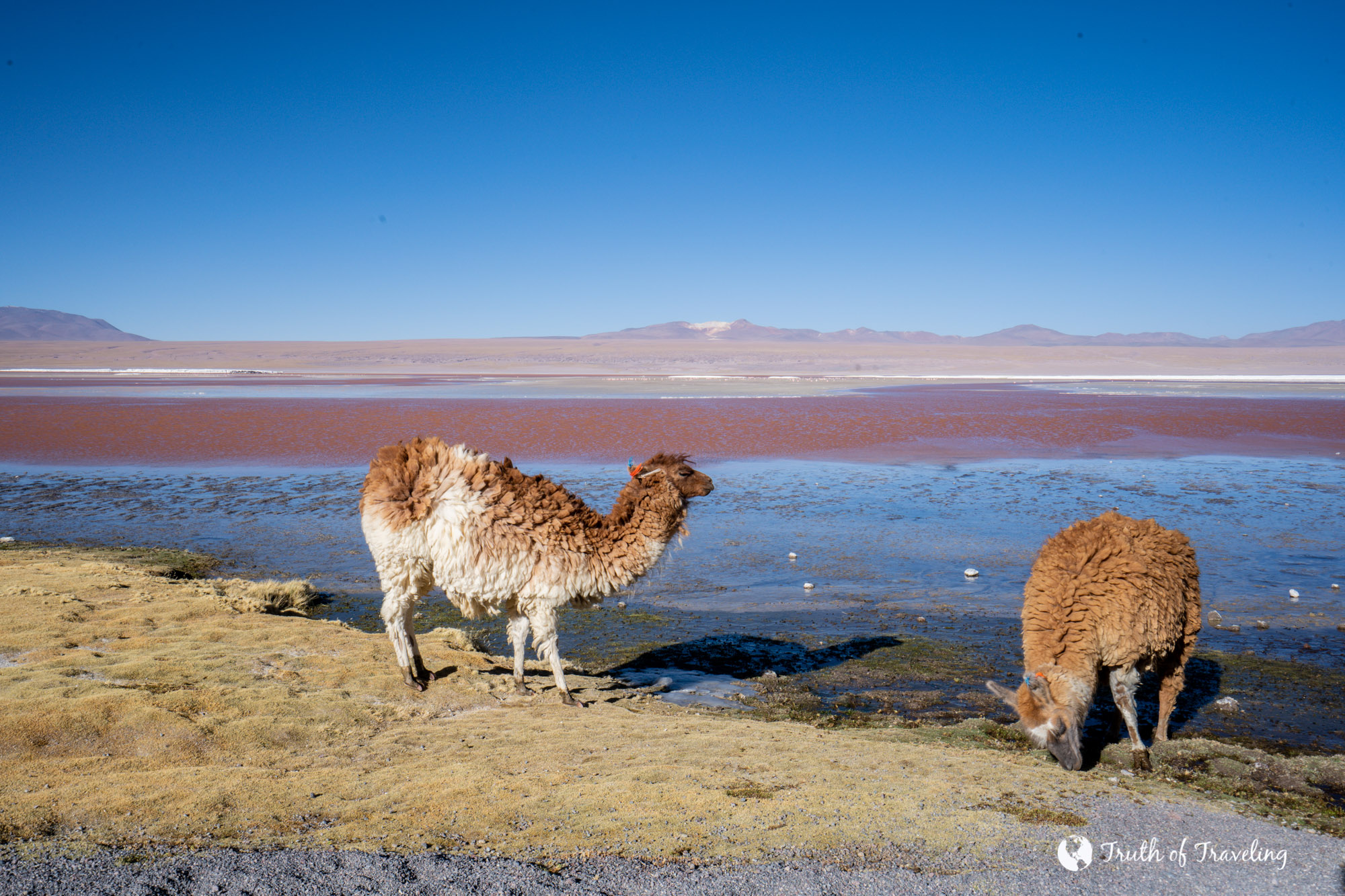
One of our last stops for the day was Laguna Colorada or the Red Lagoon which is a lagoon that gets it reddish color from algae in the water. The contrast between the red water and the white parts, white from borax which is prevalent in the area, is so unique. Here we saw llamas grazing at the edges and flocks of flamingos enjoying the water.
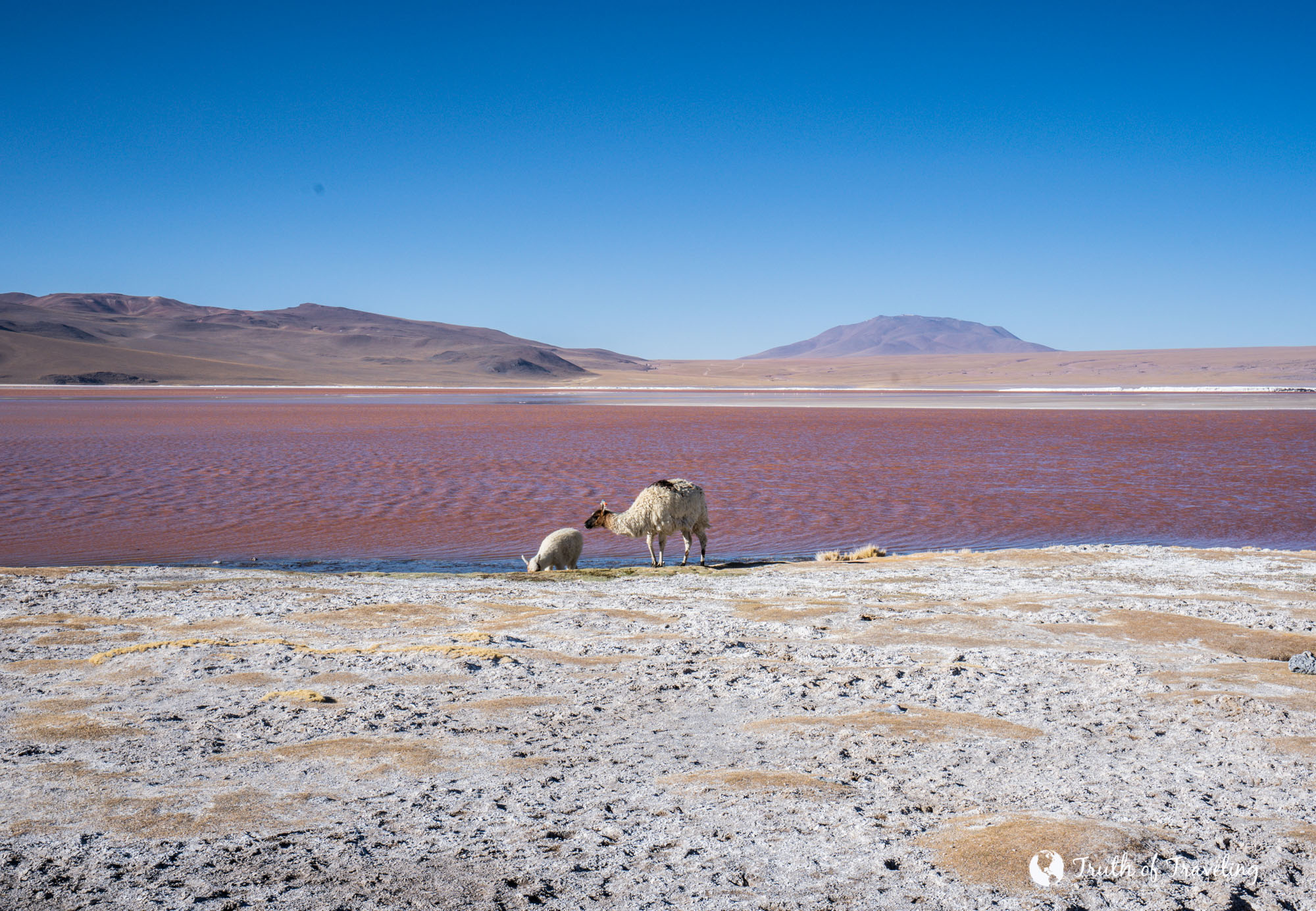
- Our guide took us first to a stop overlooking the whole lake. Then, from a request of one person in our group, we got back in the cars to drive closer down to the red part.
- The Red Lagoon is seriously one of the coolest looking places! It’s unlike anything we have ever seen before.
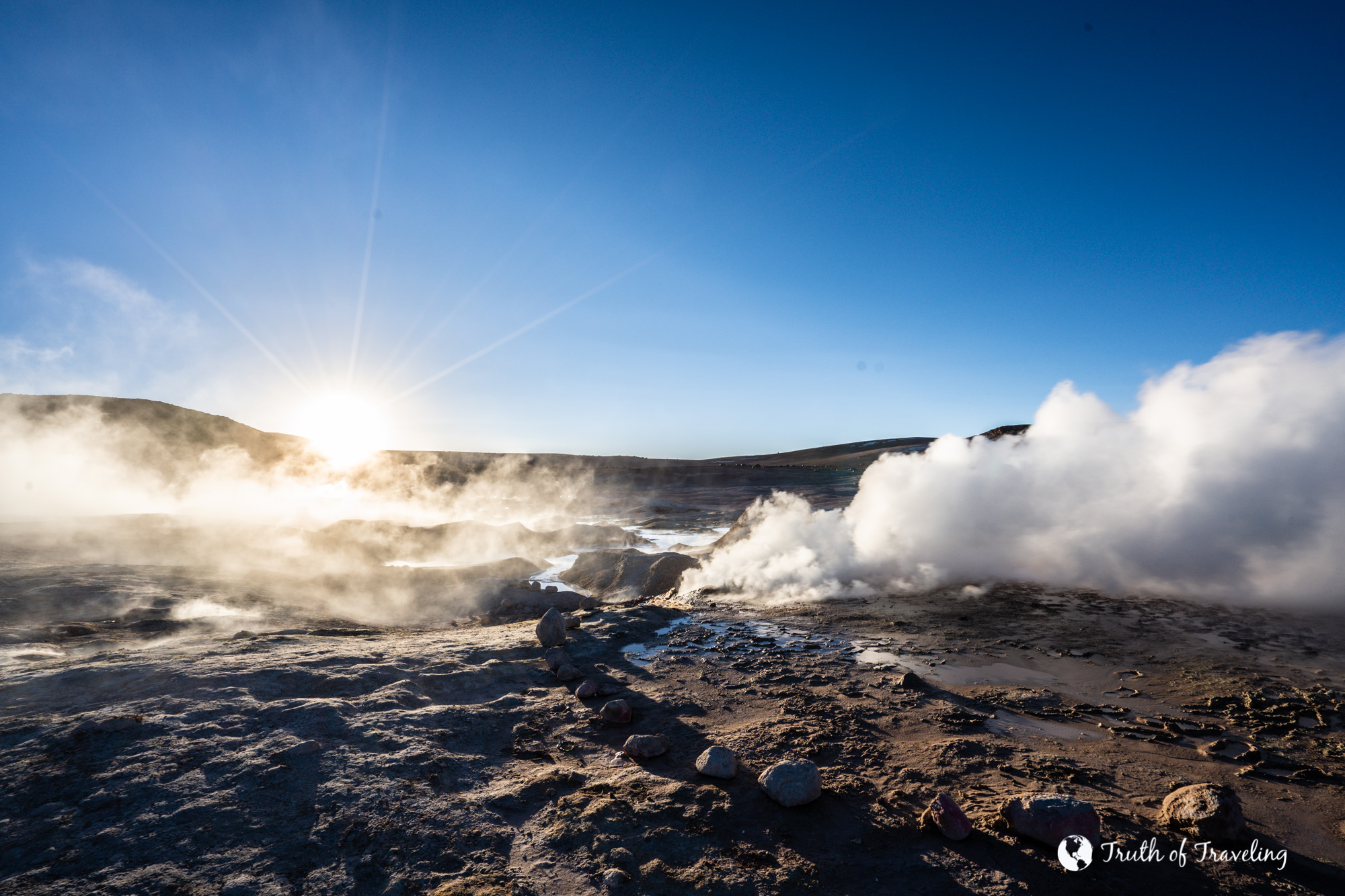
We ended the day driving just over an hour to watch a set of geysers. By this point we had seen volcanoes, mountains, lagoons, llamas, flamingos and so much more. This day felt like we had seen it all and geysers were just the icing on the cake! Our guide explained what causes the geyser activity and we enjoyed taking pictures during golden hour before heading to our accommodations for the night.
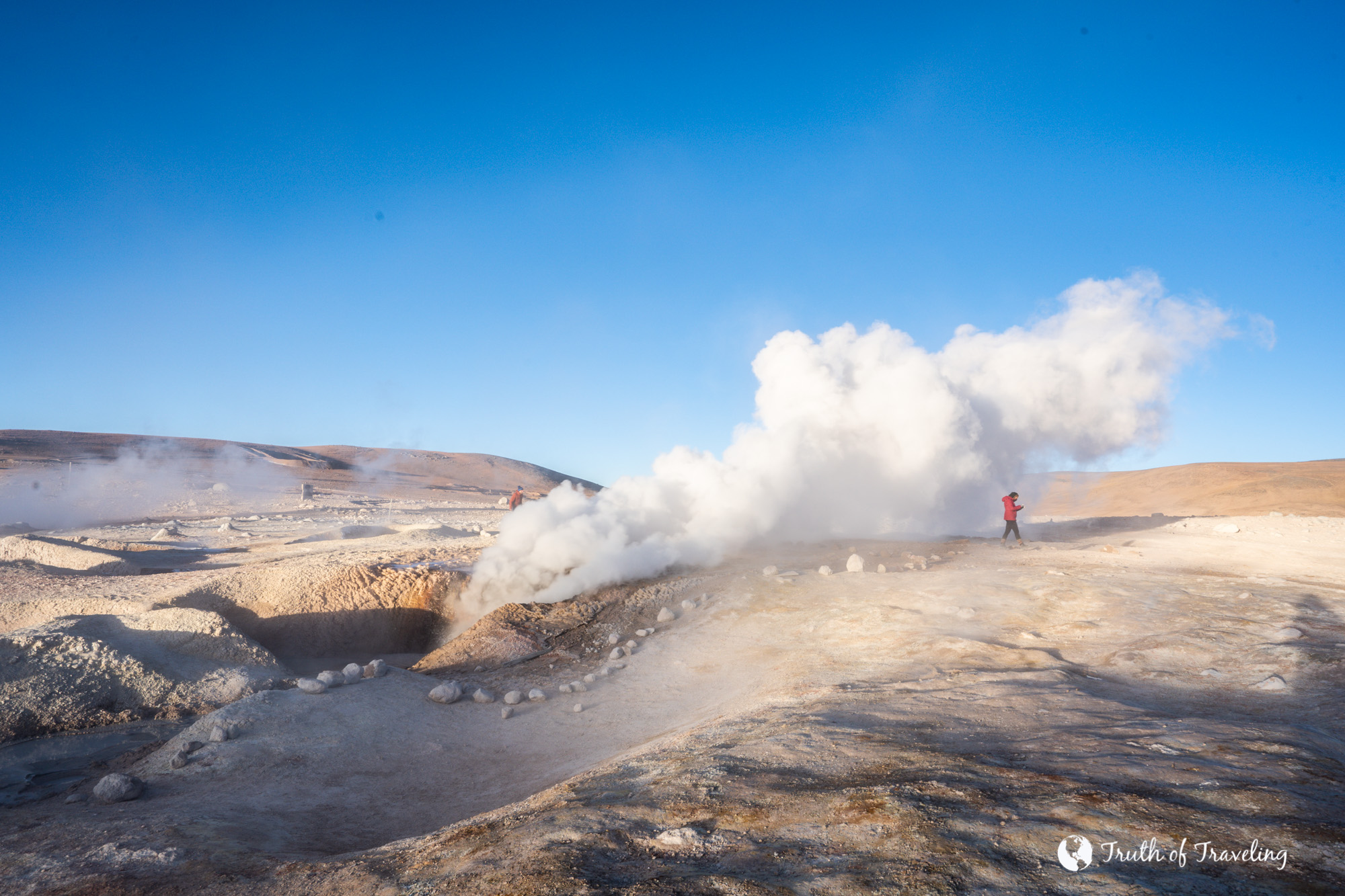
For the second night we stayed at a hotel about 45 minutes from the geysers in Huayllajara Village. The first car got to the hotel first and got a shared room with 6 twin beds. Our car got there a few minutes behind so what was left was two rooms to split between the 5 of us. Lucky for us that meant we had our own private room for the night! We got super lucky that it just happened that way!
- This hotel, like the first nights accommodations, did not have heat. Not a big deal if it was warm but it was about 15 degrees Farenheit. Again we slept in all of our layers and piled all the blankets we had on top of us at night. Thankfully it was plenty and we both woke up warm!
Outside the hotel were a set of hot springs that are around 100 degrees Fahrenheit and many people take advantage of during the tour to warm up. However, the air was so cold and we had been so cold all day that we couldn’t imagine putting on a bathing suit. Others in our group did try it and said it was really enjoyable.
- Dinner the second night consisted of soup to start along with vegetable lasagna. Definitely not what we expected to have in the middle of the Bolivian desert but it did the trick.
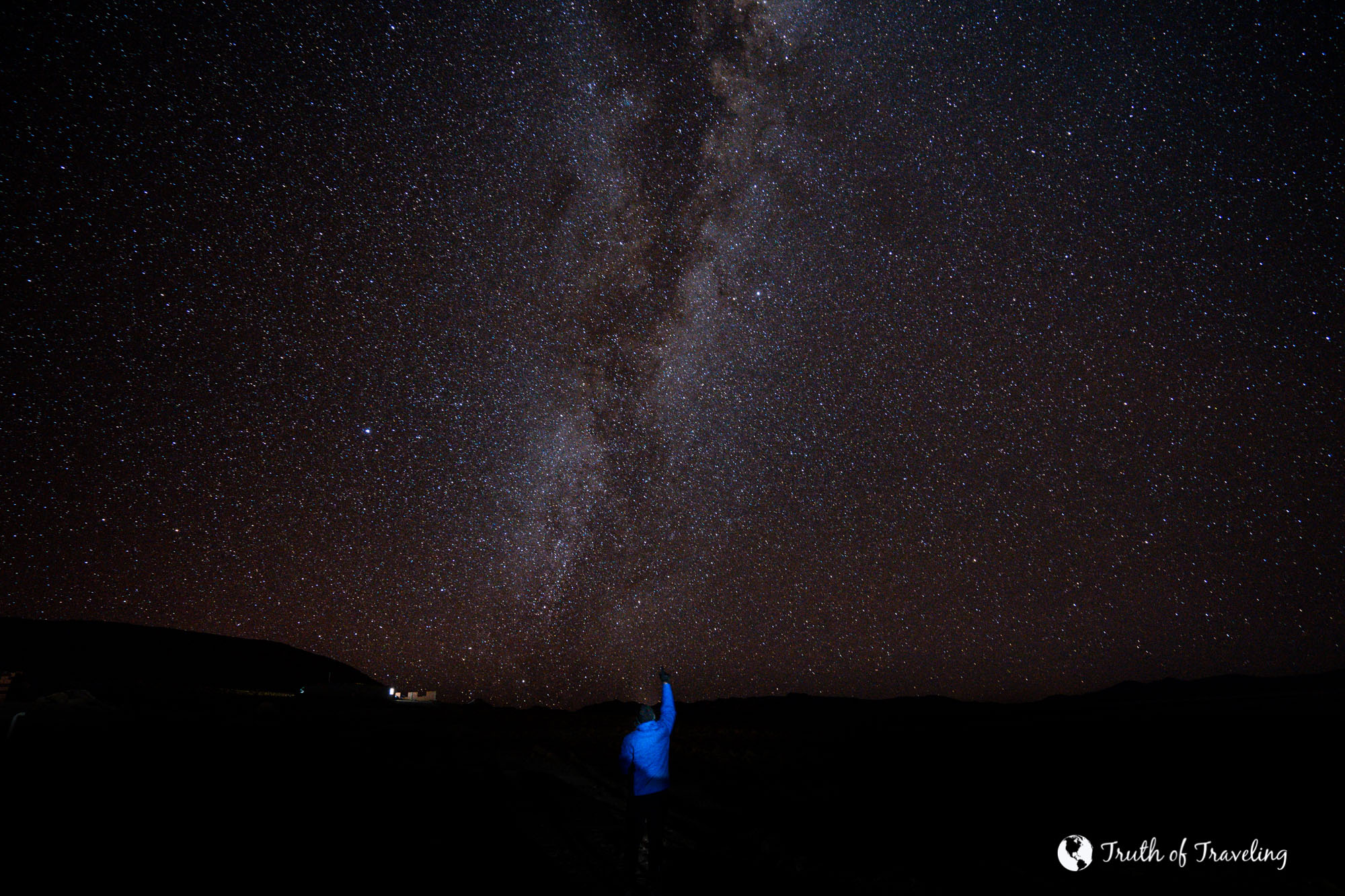
Because there were no other buildings near our accommodations, it was a good time to try to take some night photographs. It was completely clear and such perfect conditions! Even though it was cold, it was so worth it to go outside to see the Milky Way that night!
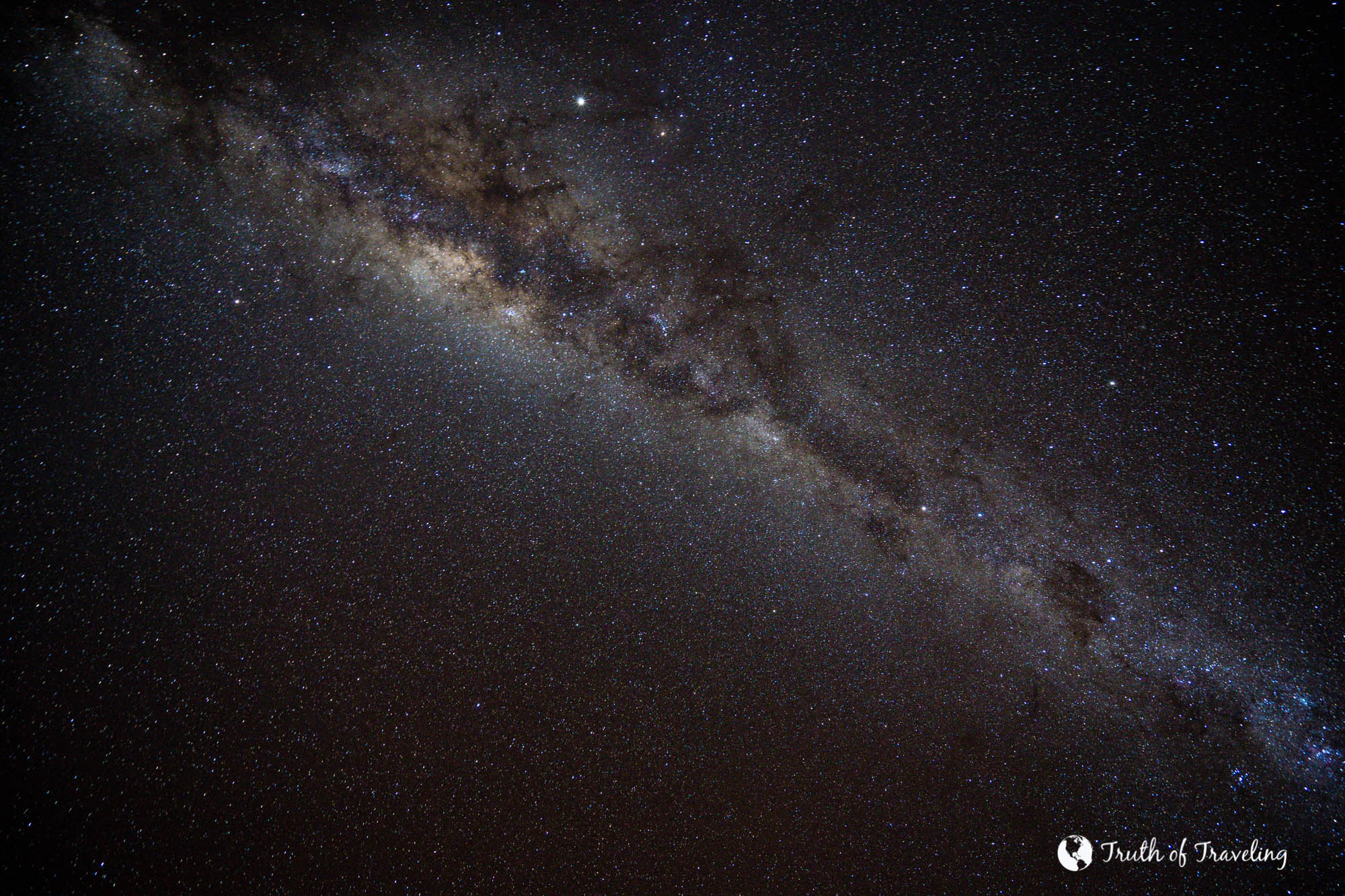
Day 3 of our Salt Flat Tour:
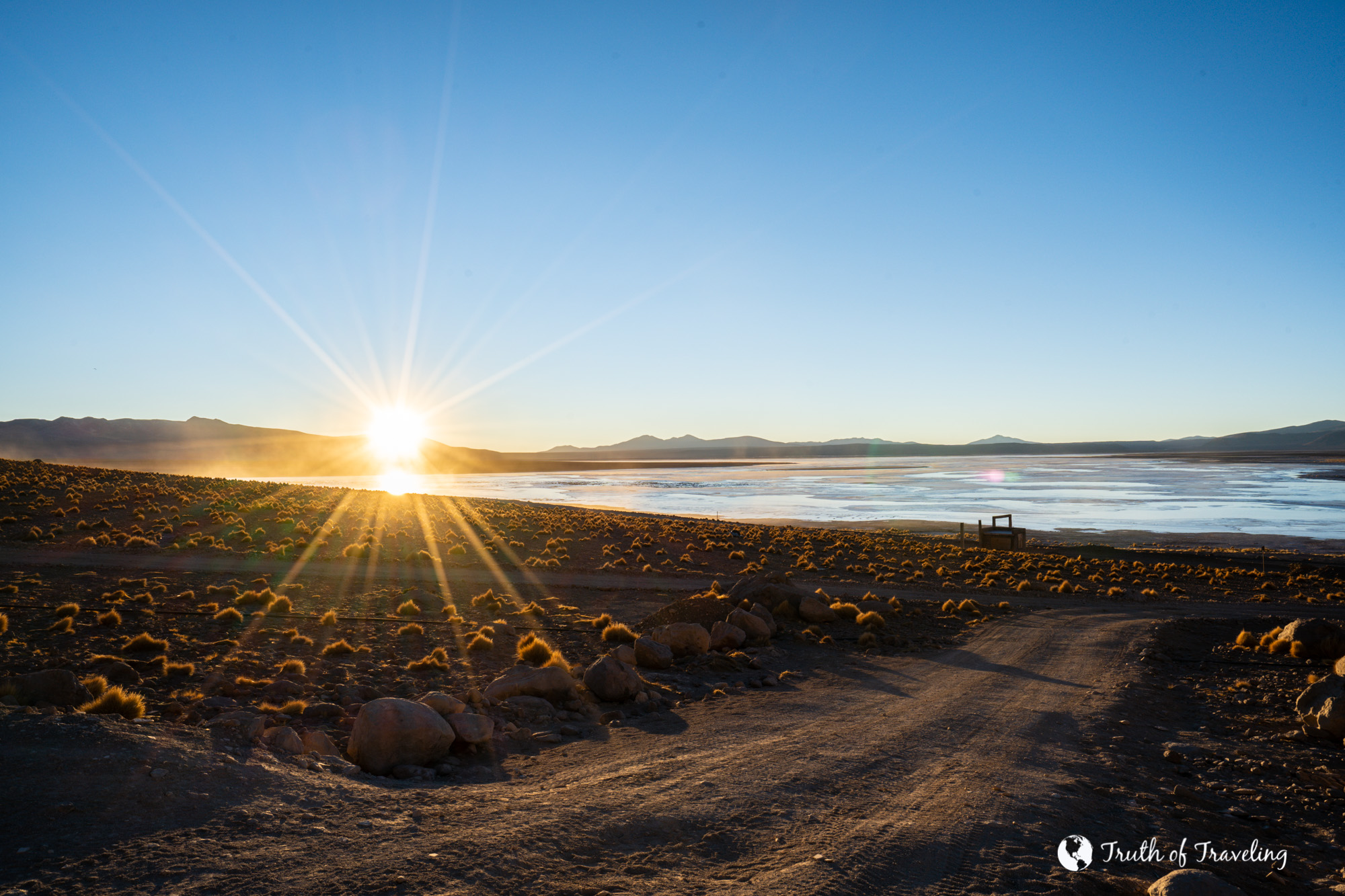
Day 3 started like day 2 with a 5:45 AM wake up. We had the fluffiest pancakes which was such a nice way to start our last day on the tour. We had a few stops on our final day, however, much of it was making our way back to Uyuni as we now had spent the last two days driving farther and farther away.
After breakfast and packing up we starting driving around 7:15 AM. After driving for about thirty minutes we stopped along the road (more like dirt path) to take pictures of the surrounding mountains in the Salvador Dali Desert. There was literally nothing else in sight other than mountains. It was very surreal to be exploring such a remote place.
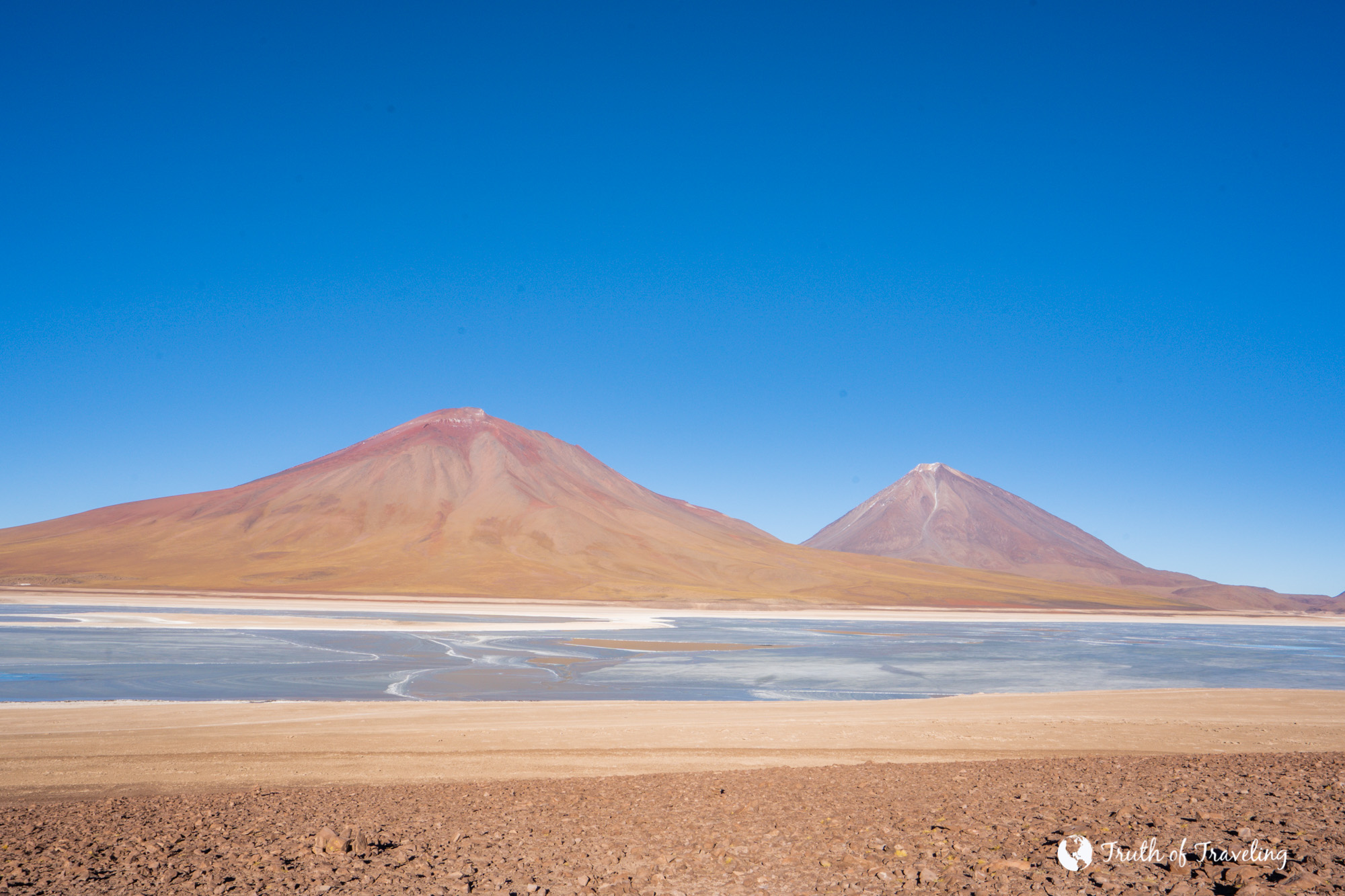
We stopped at the Green Lagoon around 8:30 AM. Our guide explained that the lagoon is green during certain months of the year so to us in July it appeared more blue. We took our final lagoon pictures as well as a big group photo.
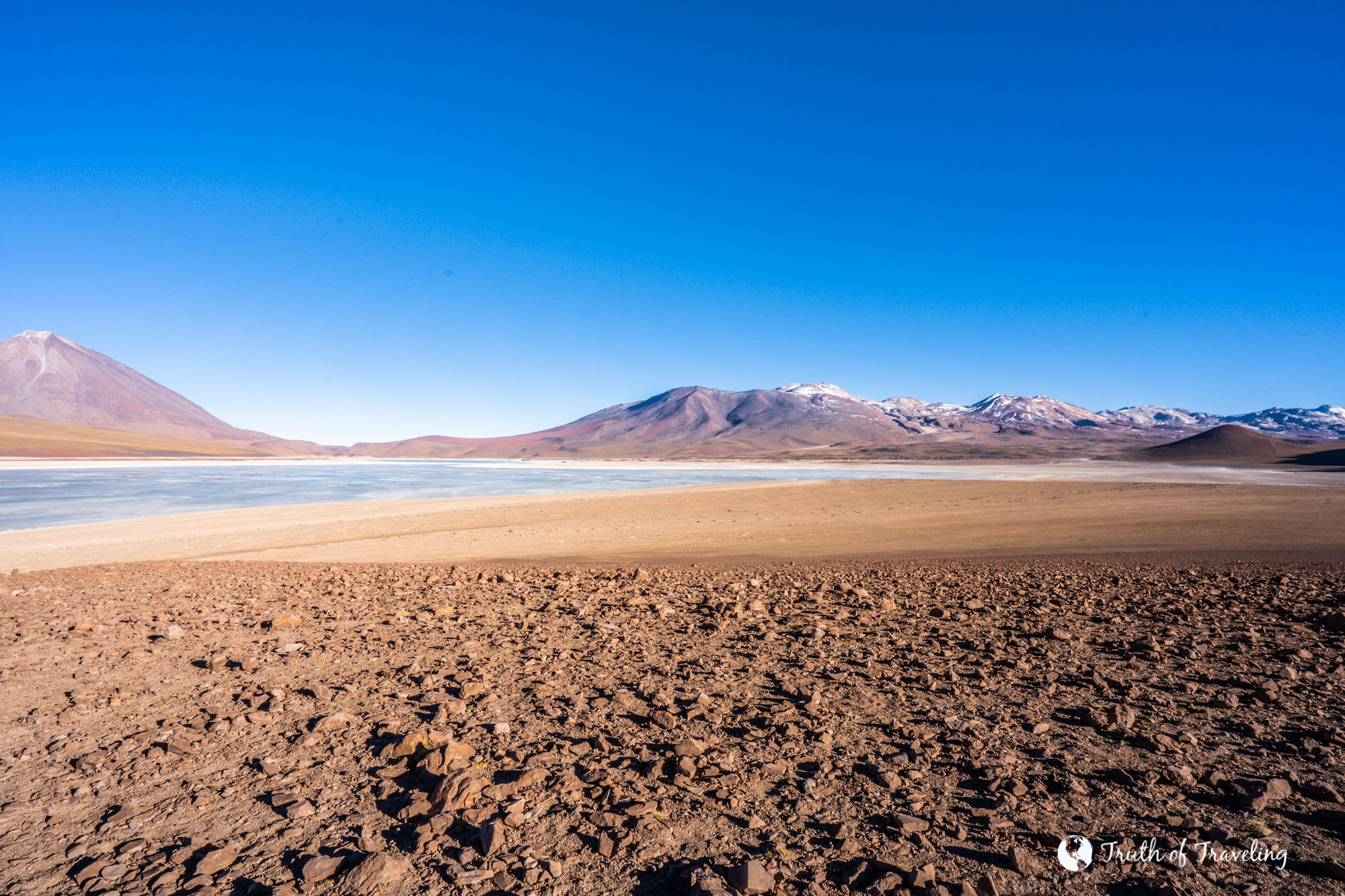
- On most tours you have the option to return to Uyuni or be dropped off at the Chile border because it is so close. So a few people from our group continued on to Chile while the rest of us got back in the cars to go towards Uyuni.
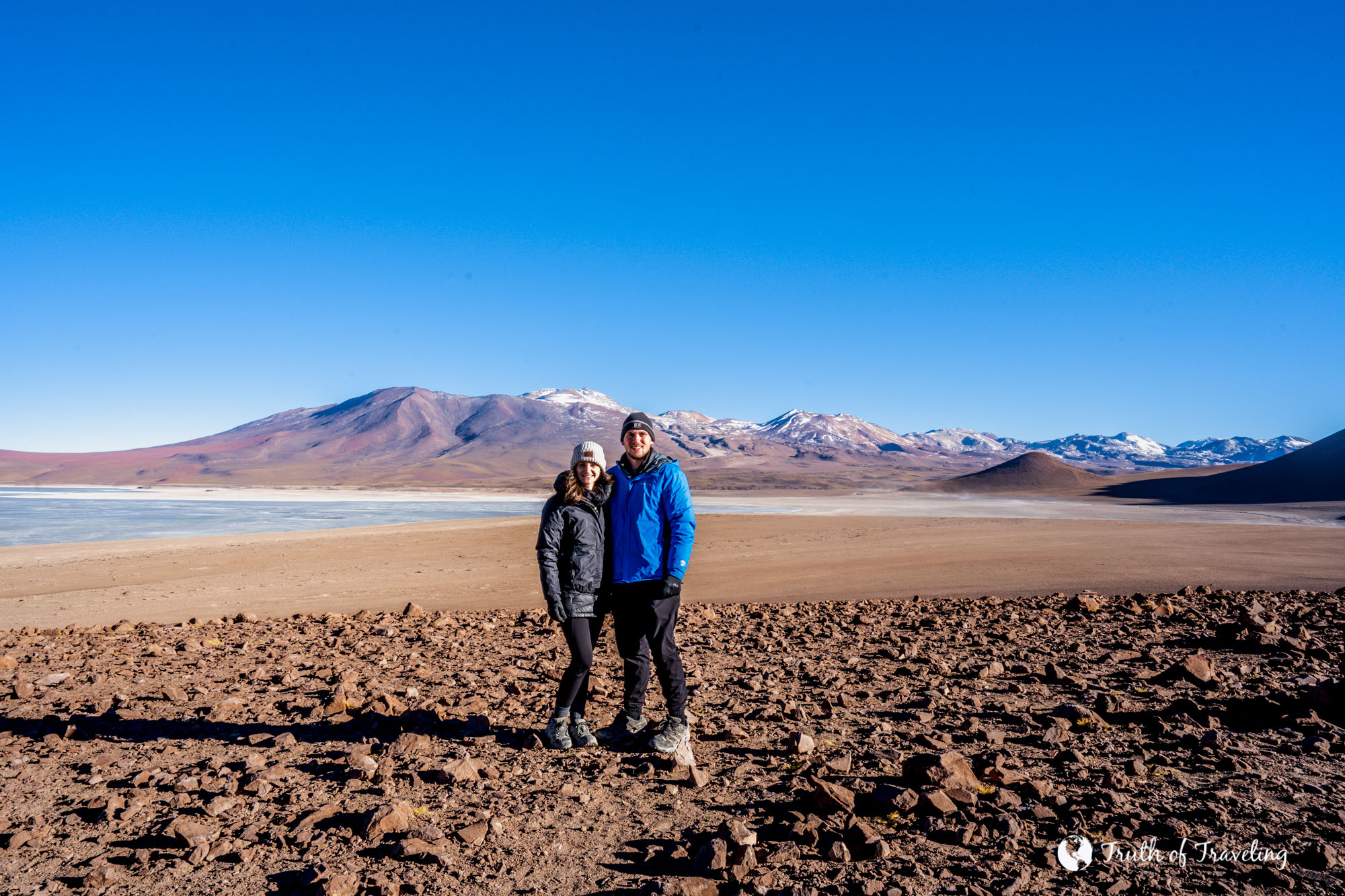
After driving for about 3 hours we got to our lunch spot in a small village. Even in this small village it was apparent we were starting to get out of the desert and closer to civilization again. For our final lunch we had soup, rice, chicken, and vegetable croquettes.
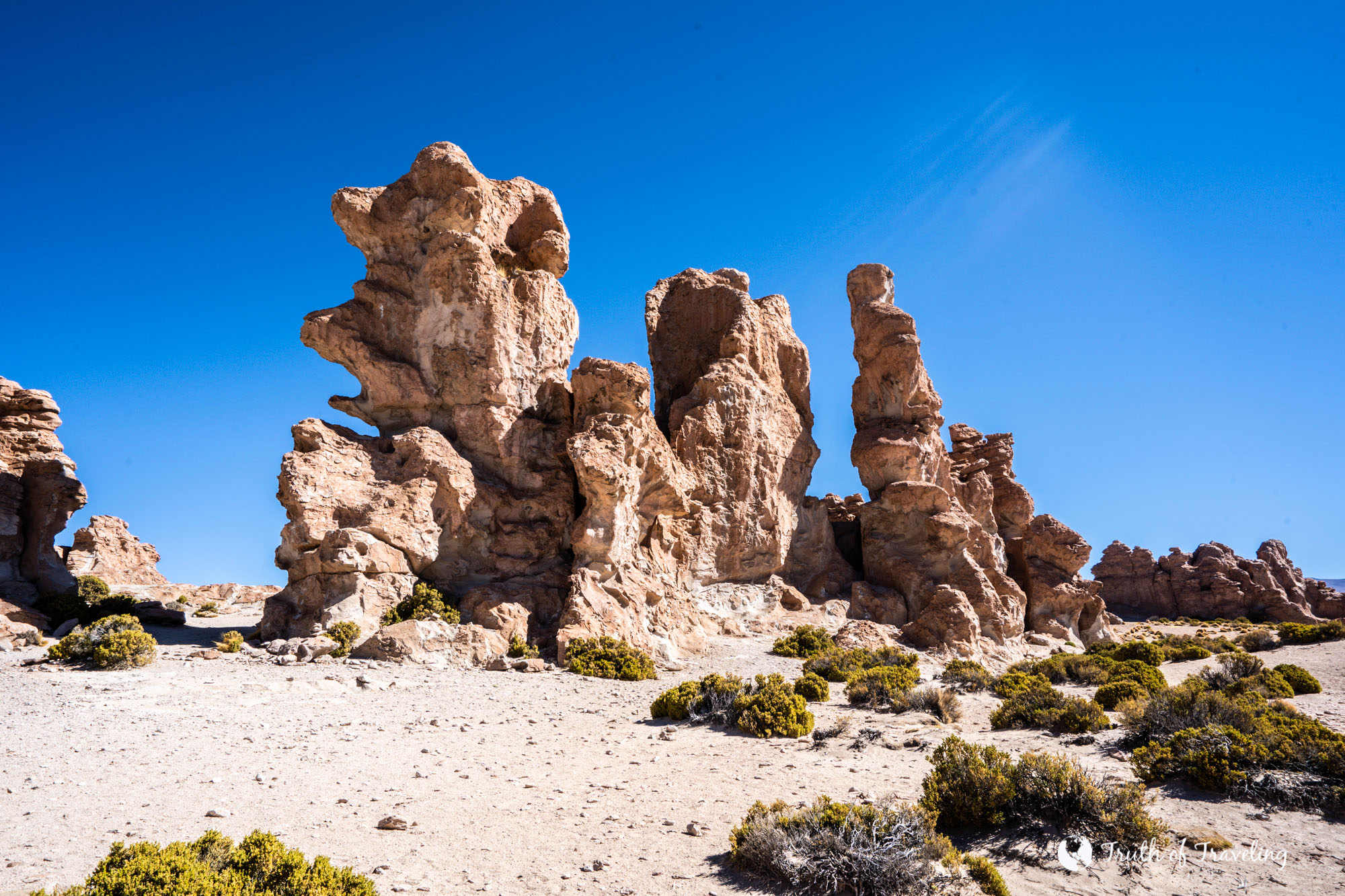
Our final stop on our 3 day salt flat tour was around 2:00 PM at these very impressive rocks. Worn away by erosion, it looked like we were in the Western United States. We wandered through and enjoyed the sunshine (something we hadn’t had much of) before hopping back in the car for our final stretch of driving.
- We stopped to use the bathrooms and stretch our legs in San Cristobal around 4:00 PM.
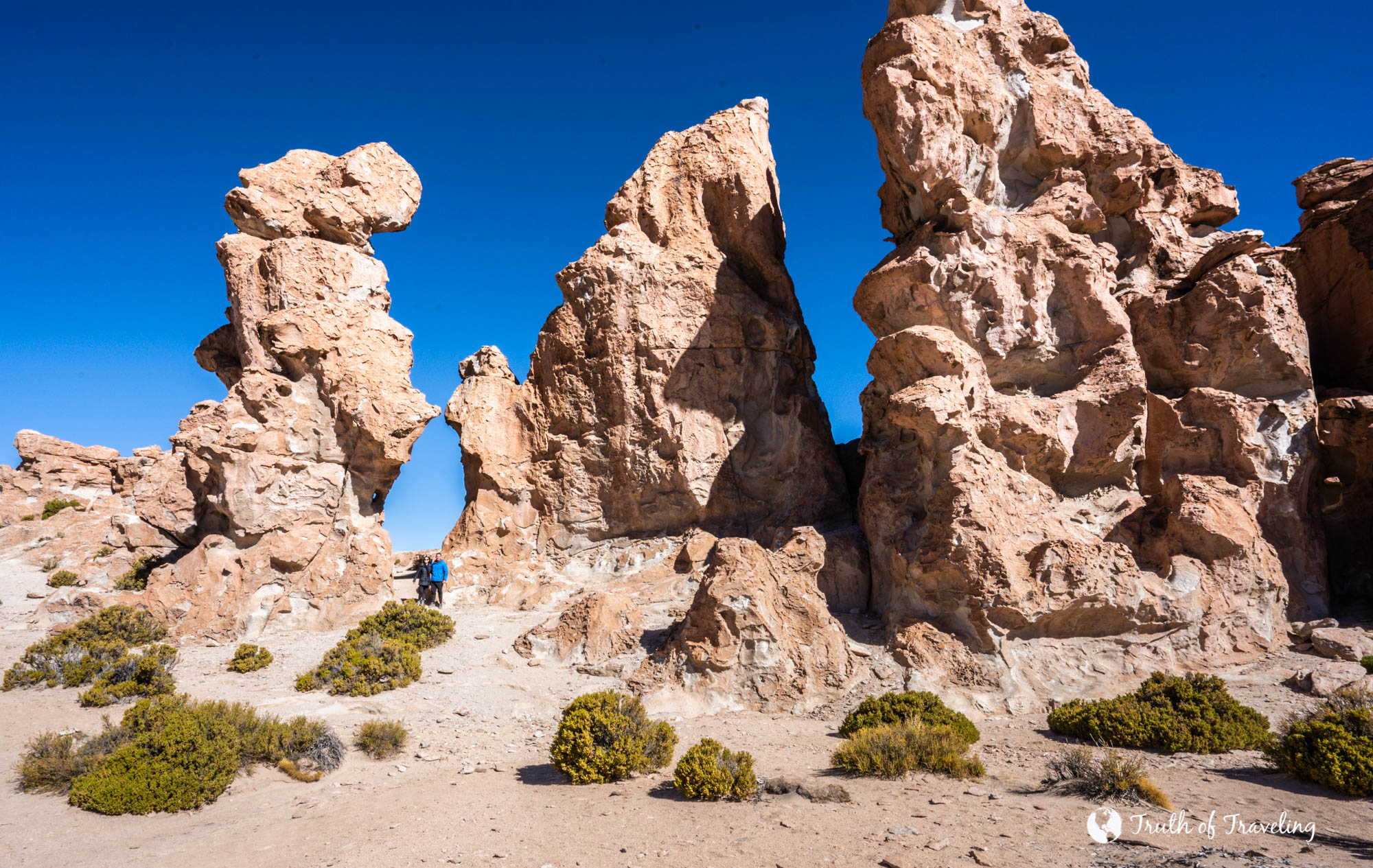
At 5:15 PM we arrived back in Uyuni. We were a bit sad to say goodbye to our amazing guide Dino who was so enthusiastic the entire time! After getting our bags we had a quick dinner at Minuteman Revolutionary Pizza (one of the few restaurants in Uyuni) before our overnight bus back to La Paz left at 8:00 PM.
- We arrived into Uyuni the same day our tour started and then left the same day we finished. You can stay in Uyuni if you don’t want it to be that quick but there is not too much in the village of Uyuni. We found it was VERY doable to get the bus on the same days as the tours as the tour companies know thats what many people do. We had no problem getting back to Uyuni with plenty of time to make our bus.
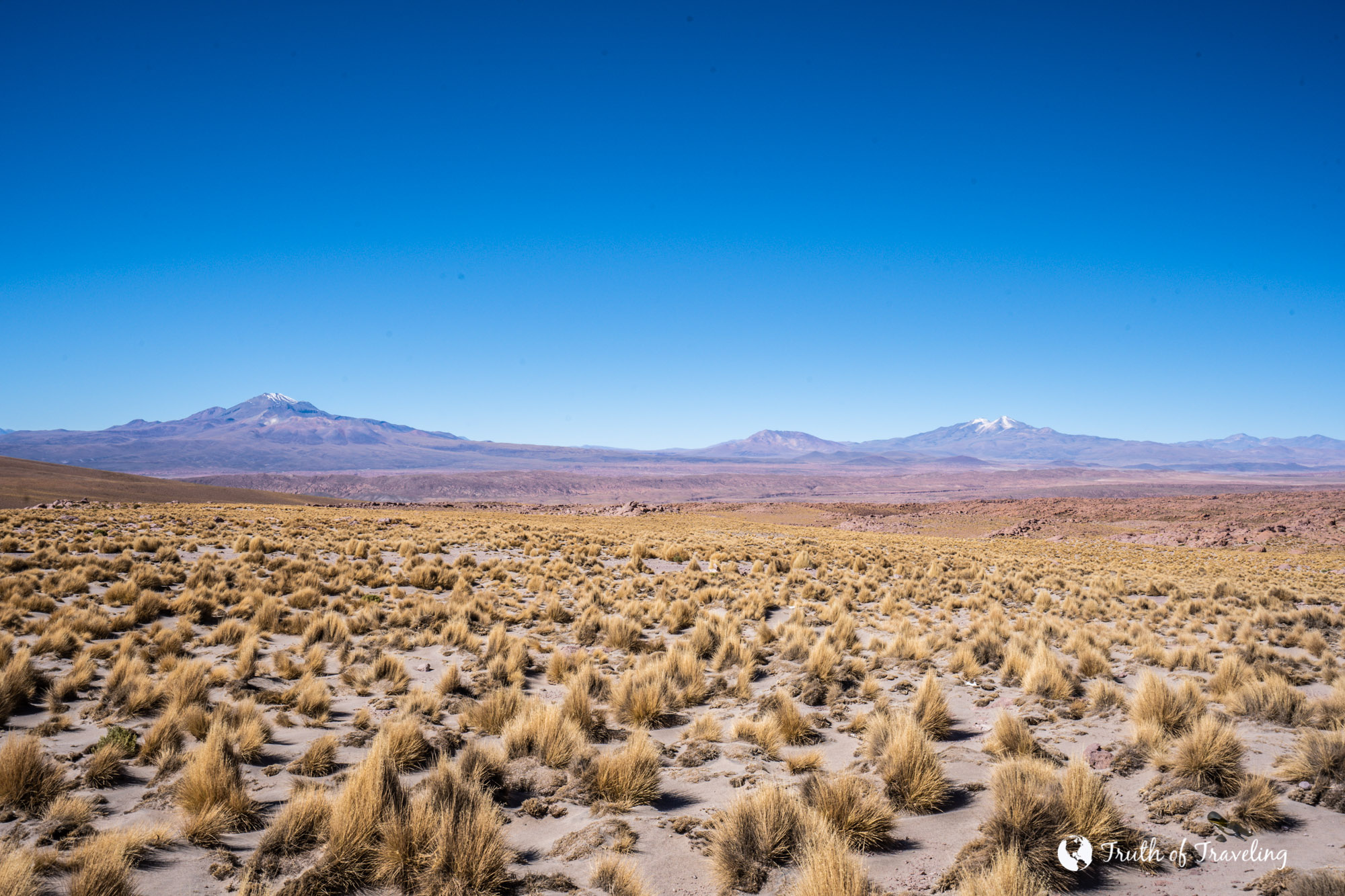
Going to Bolivia? Check out our full post on How to Get a Bolivian Visa As a US Citizen
Our Honest Thoughts About our 3 Day Bolivian Salt Flat Tour
The landscape and the locations we were in were absolutely amazing. The salt flat itself is so remarkable! It extends forever and we are so glad to have seen it! It was something that was so high on our bucket list we feel really lucky to have had the experience!
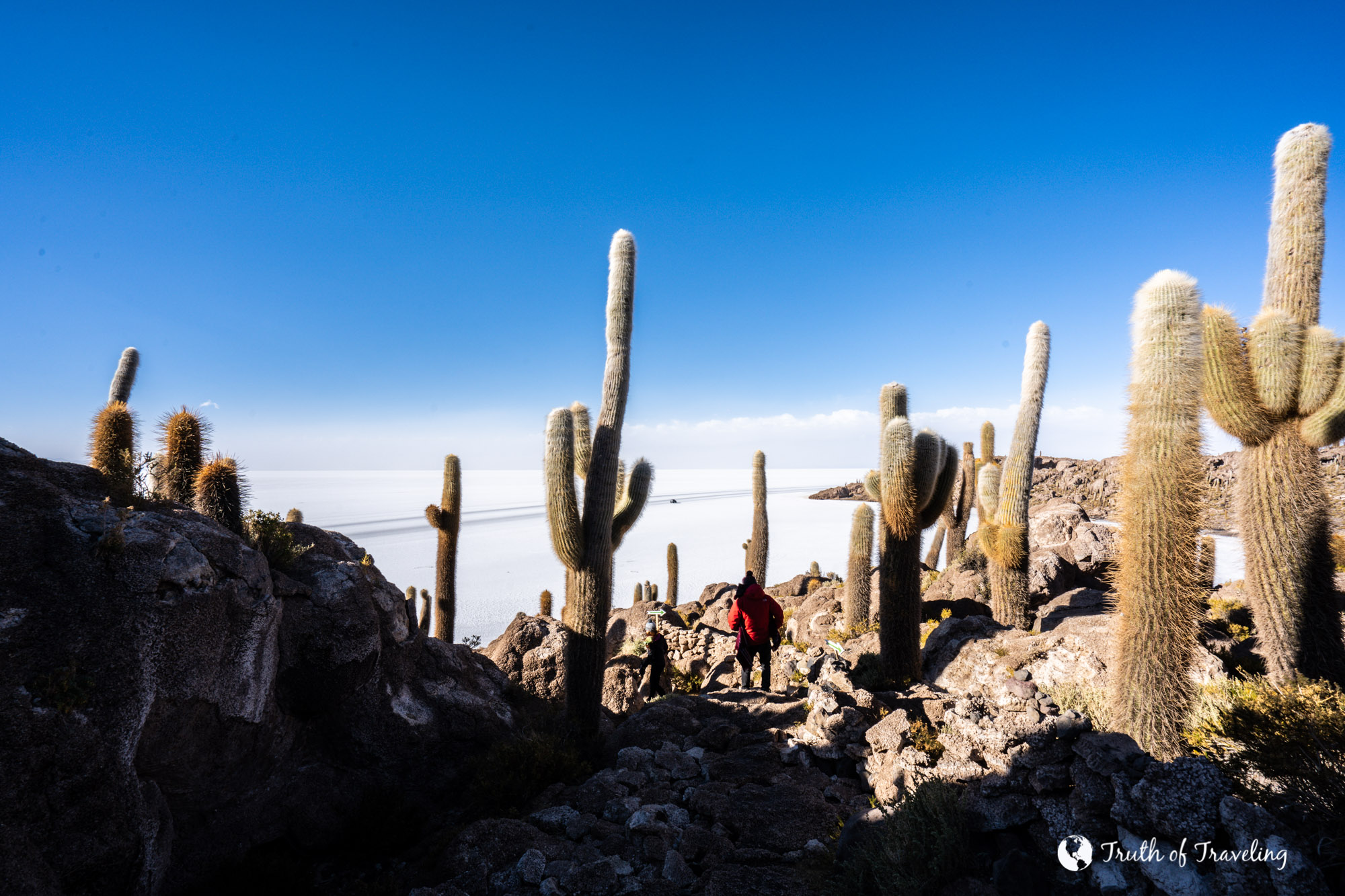
However, the weather during our 3 days was SO cold. We visited South America in their winter because we wanted to hike to Machu Picchu in the dry season. So we knew going into this trip that while it would be good for Peru, it would mean the rest of our travels would be cold. We were prepared for cold but it was freezing during these 3 days. It was snowing in Uyuni as we were leaving and our guide kept saying a few times that the weather we had was unseasonably cold for the area.
It was extremely windy which was the problem. With no wind we would have been fine but the wind made it feel like it was 0 degrees Fahrenheit. So definitely plan ahead if you’re visiting the Salar de Uyuni in the dry season. You need layers that will keep you warm in windy weather like rain pants or a wind breaker.
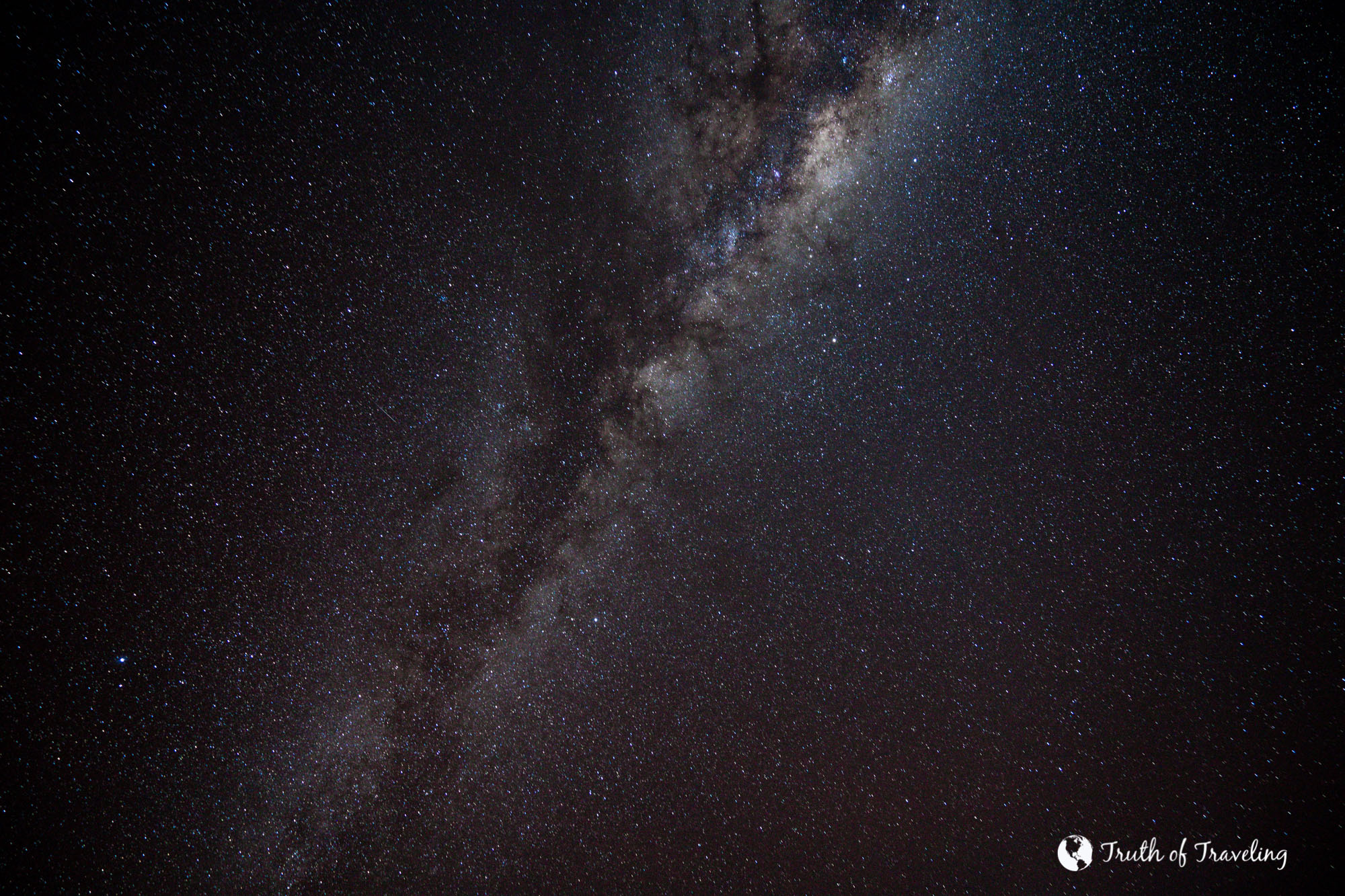
Honestly though a lot of the stops we made throughout the 3 days were 10-15 minutes stops before we were all freezing and had to jump back into the warm cars. It was a bit of a disappointment we didn’t luck out with better weather to make it a little more enjoyable. It’s not anyones fault but we do want to be honest with our overall experience. Neither of the accommodations for the 2 nights had heat either. We knew we would be roughing it (a lot of places in South America don’t have heat so this wasn’t a huge surprise) but it just made it hard to warm up at night.
Overall we would DEFINITELY recommend the 3 day Bolivian salt flat tour! It was so amazing to see places that are so remote and different from the landscapes we are used to seeing. Our recommendation if you’re going in the dry season (which is their winter) would be to bring a lot of layers and make sure you’re prepared for really cold temperatures!
